Join me as I unbox, commission and repair a 45-year-old NOS Sansui XR-Q7 direct drive turntable!
That’s right, another new old stock Sansui turntable, can you believe it?! It’s been almost 10 years since I wrote about unboxing and commissioning this incredible, new-old-stock Sansui SR-929 direct drive turntable. What better way to celebrate than to unbox and commission another NOS Sansui direct drive turntable – a beautiful Sansui XR-Q7, sitting in a box for over 40 years, direct from Japan.
The Sansui community is a tight-knit one, and I’m pleased to work with many local Sansui owners and collectors. My customer Rob, who currently owns the beautiful Sansui SR-929 I mentioned above, also owns possibly the largest collection of Sansui equipment in WA.
This incredible collection includes two complete rackas, including the spectacular Sansui BA-5000 power amplifier I repaired last year, the amazing Sansui AU-X1 integrated amp I repaired a couple of years ago, AND a Sansui XR-Q9 DD turntable I repaired, both of which I have yet to write about, along with a dozen or so other classic Sansui pieces I’ve yet to write about. I’ve got some writing to do!
I also promised Rob we would make a video about his collection, so let me (and Rob) know in the comments below if this is something you’d be interested in seeing.
Image Gallery
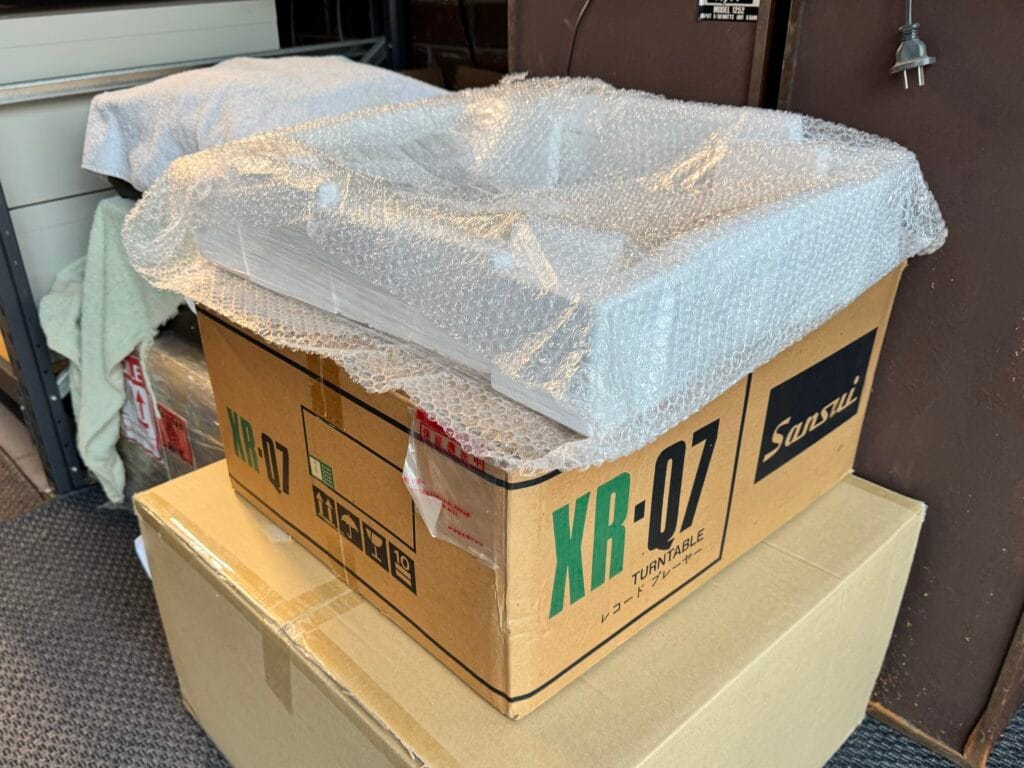
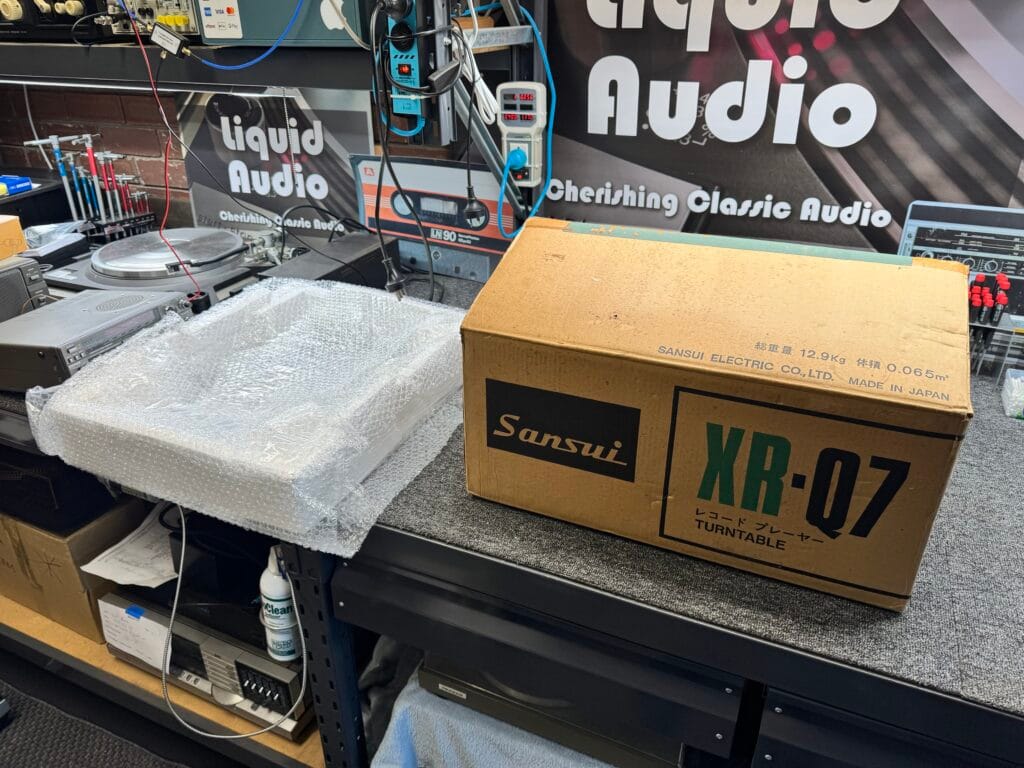
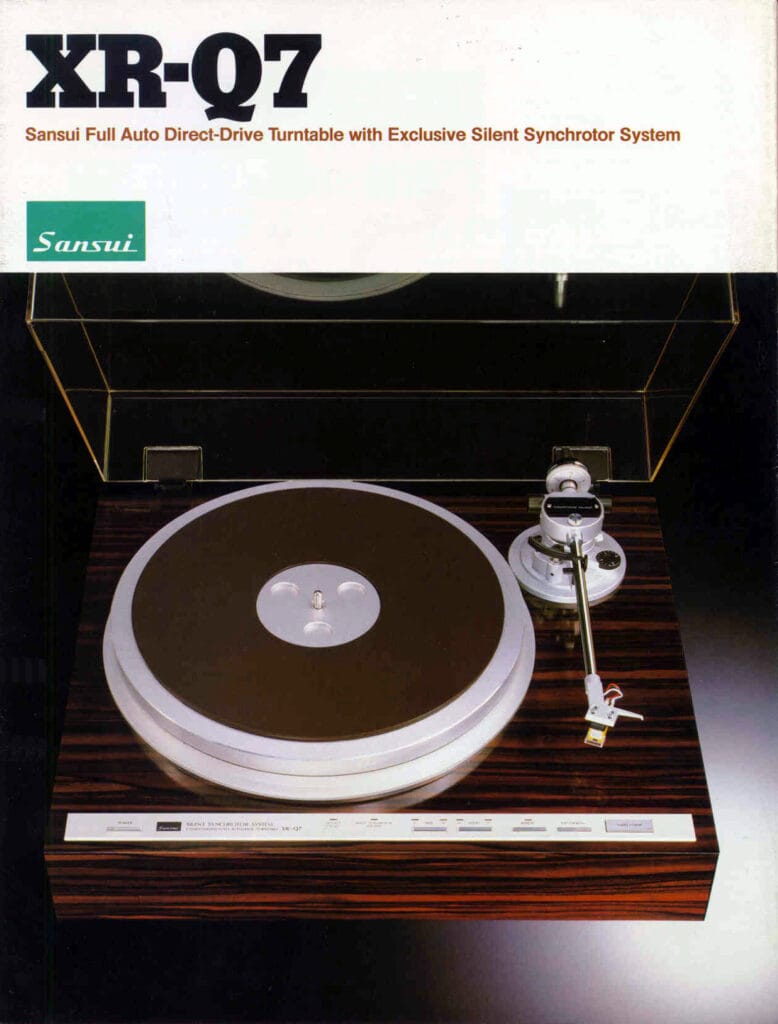
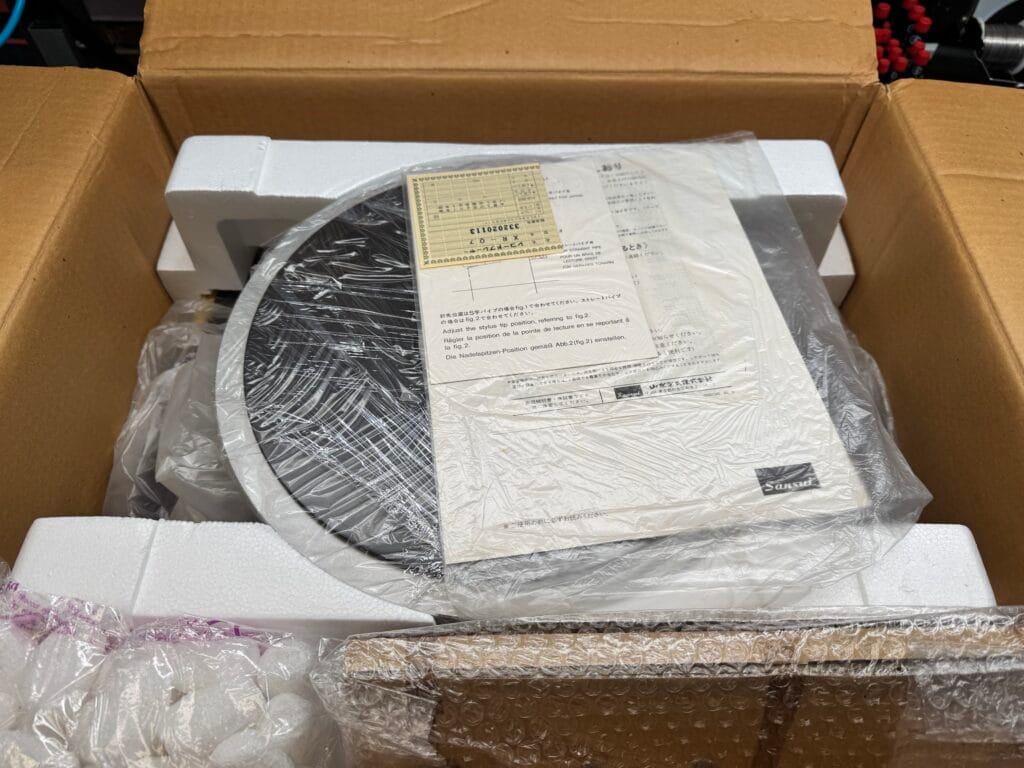
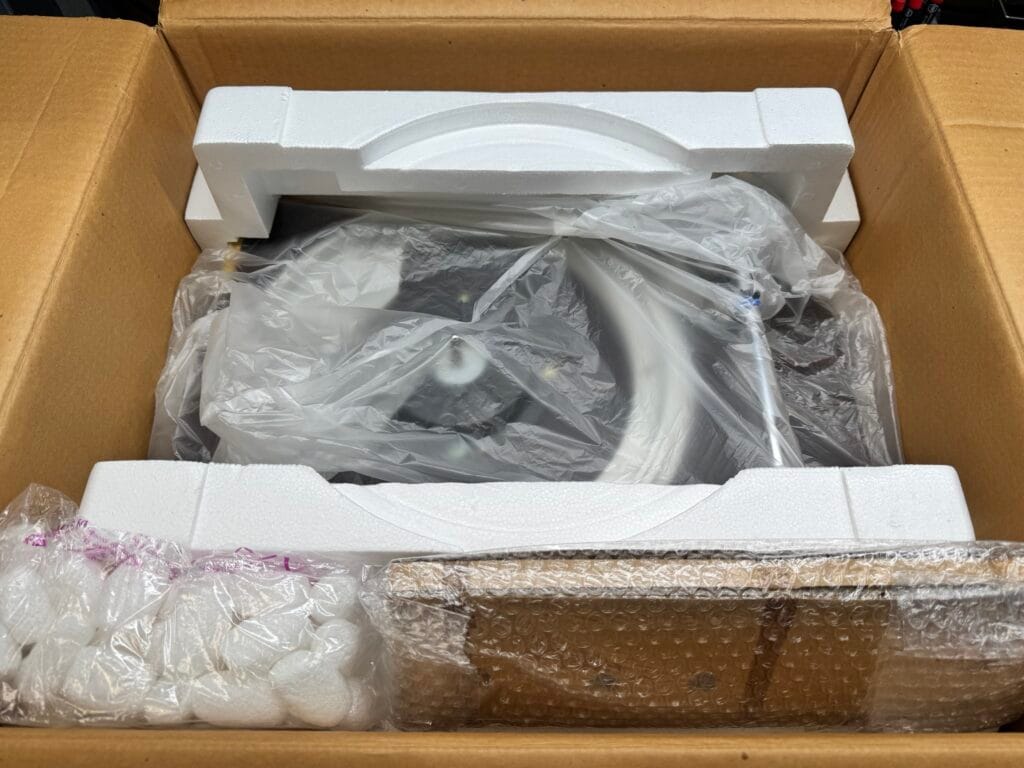
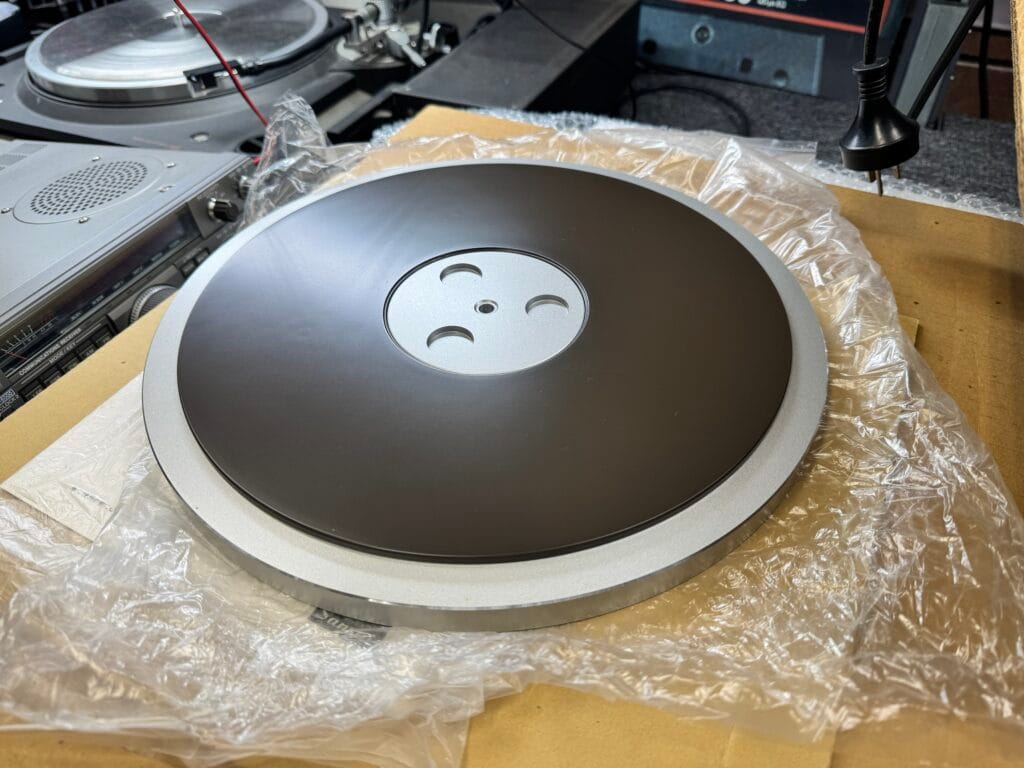
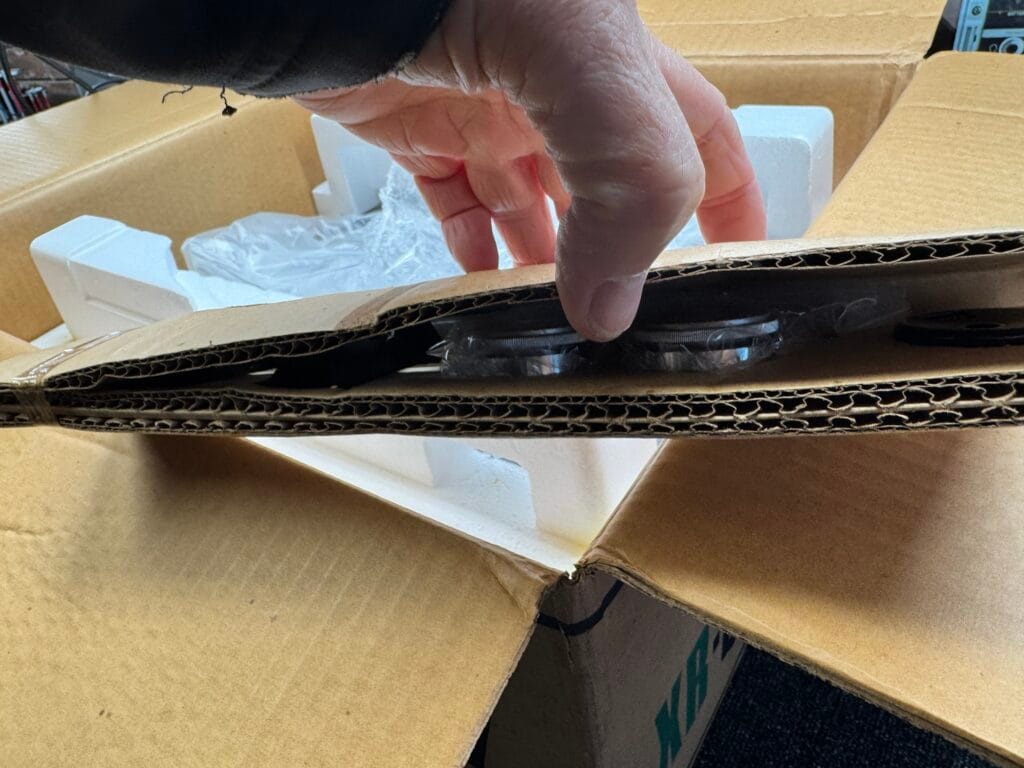
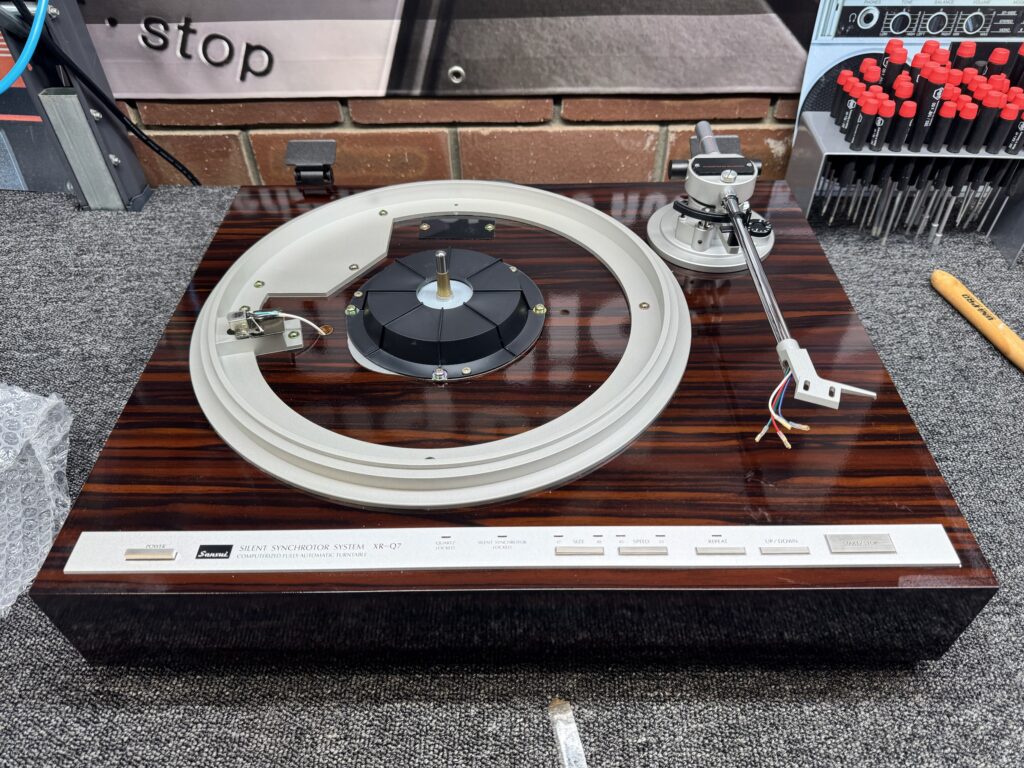
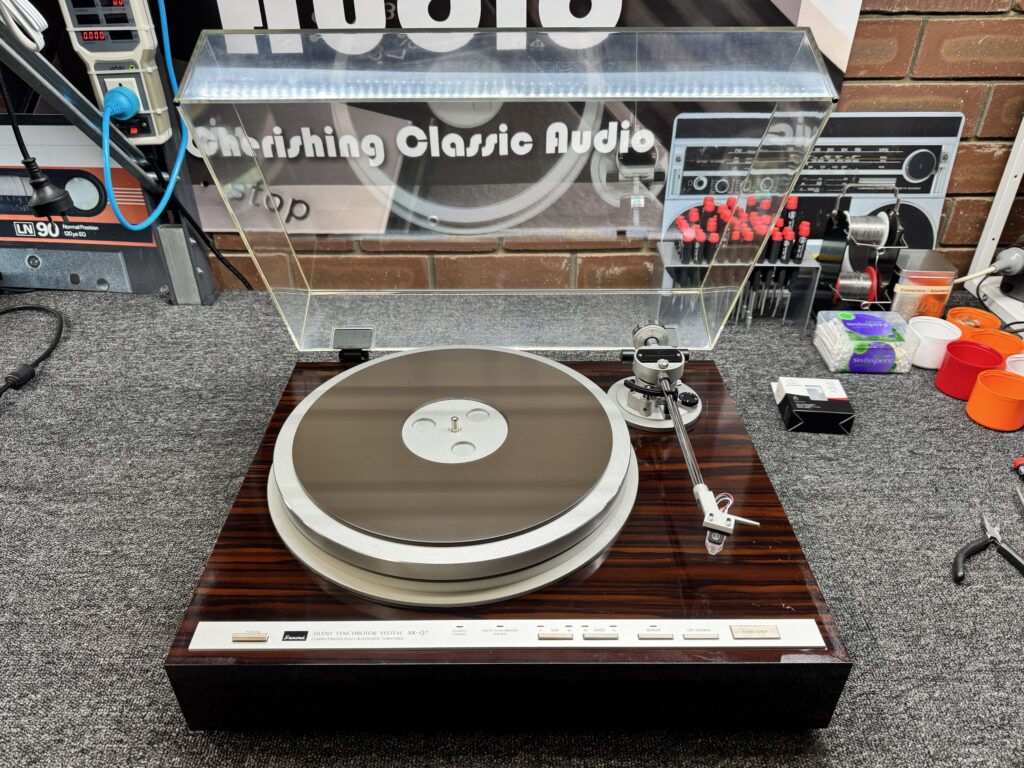
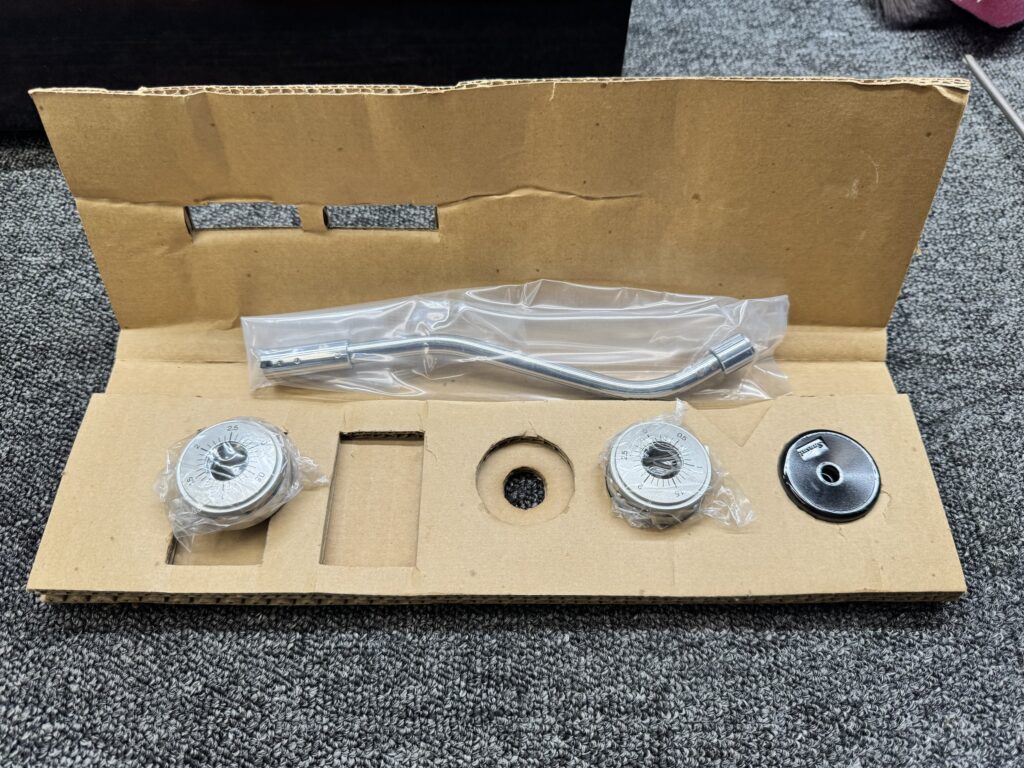
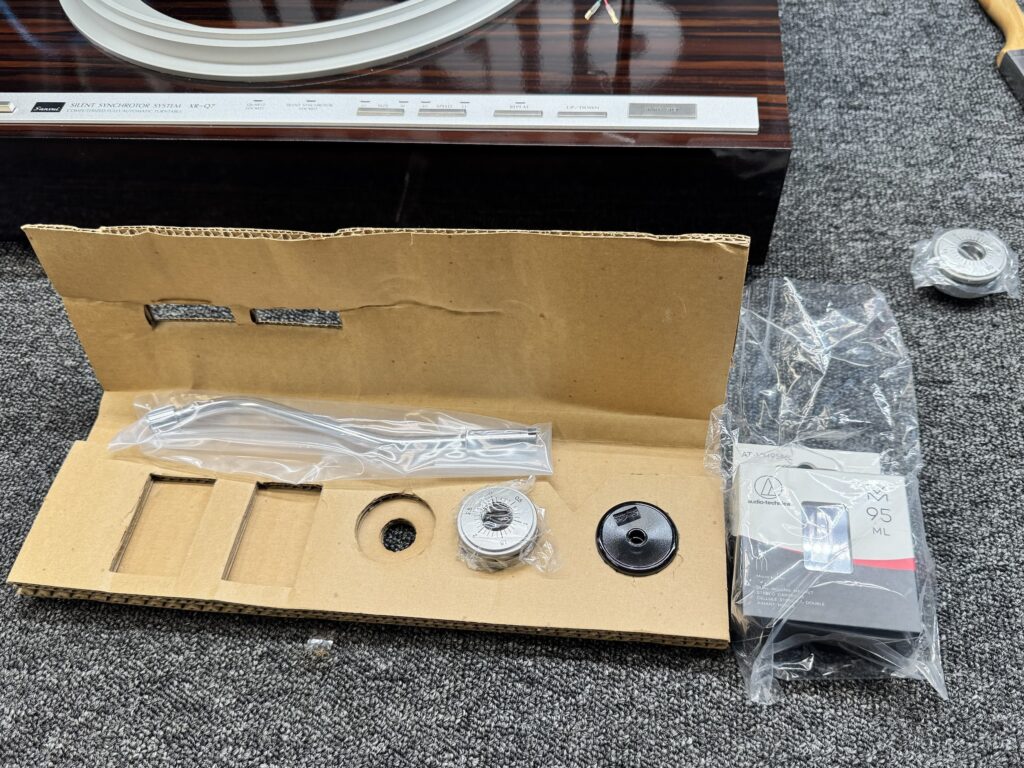
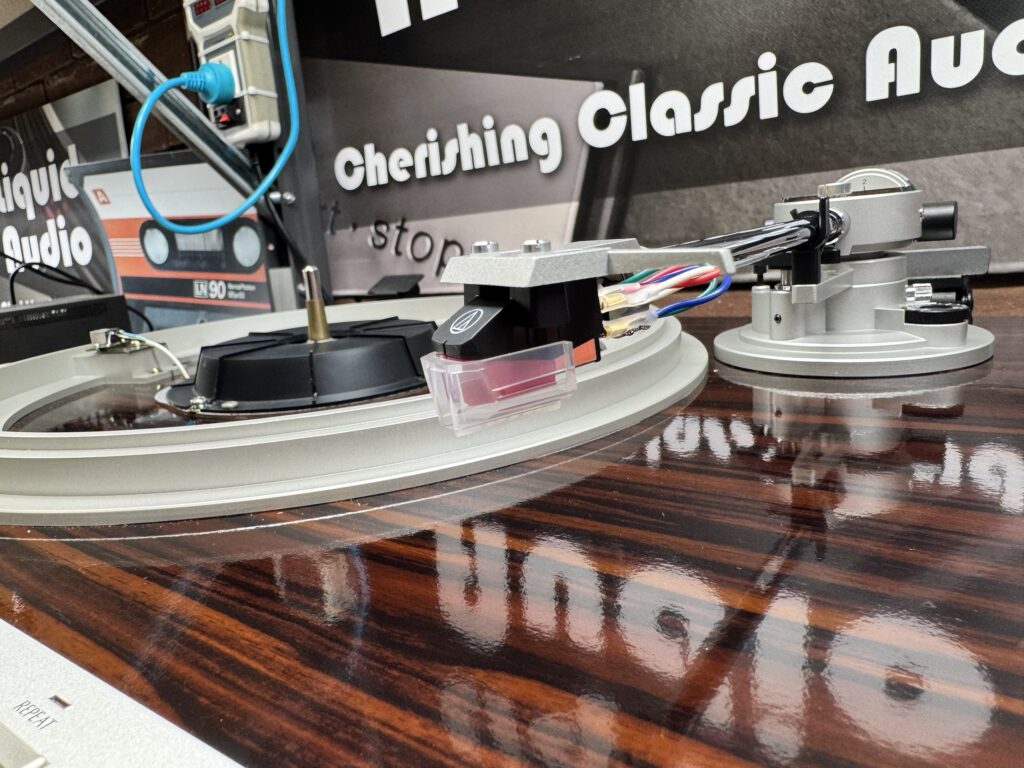
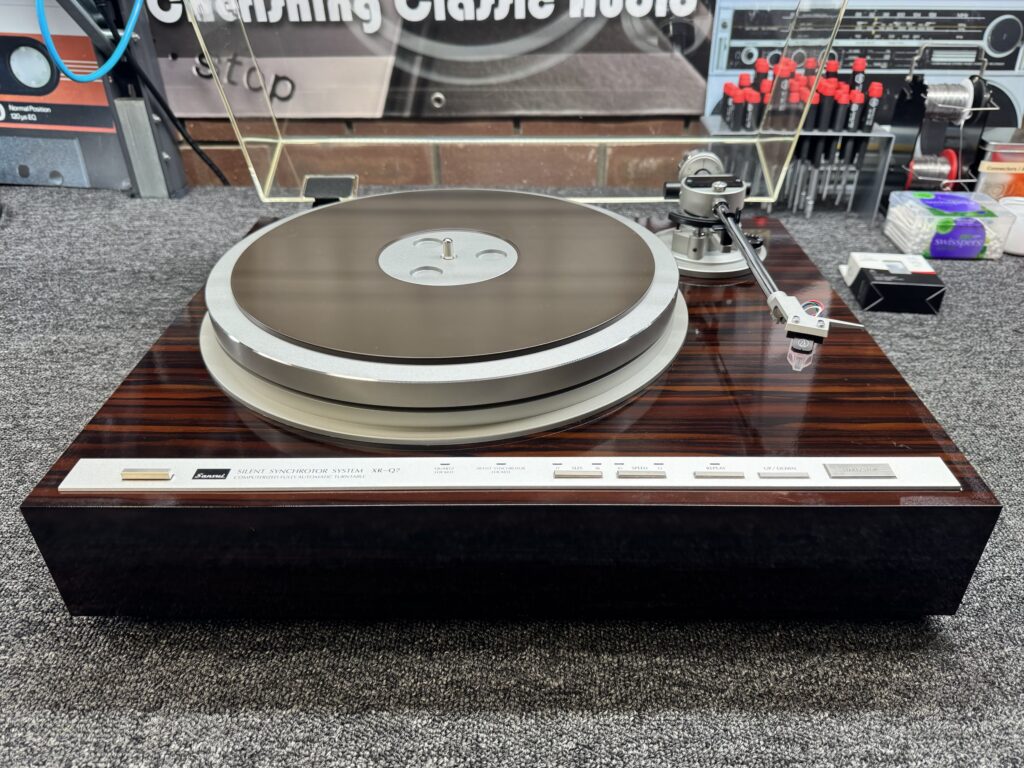
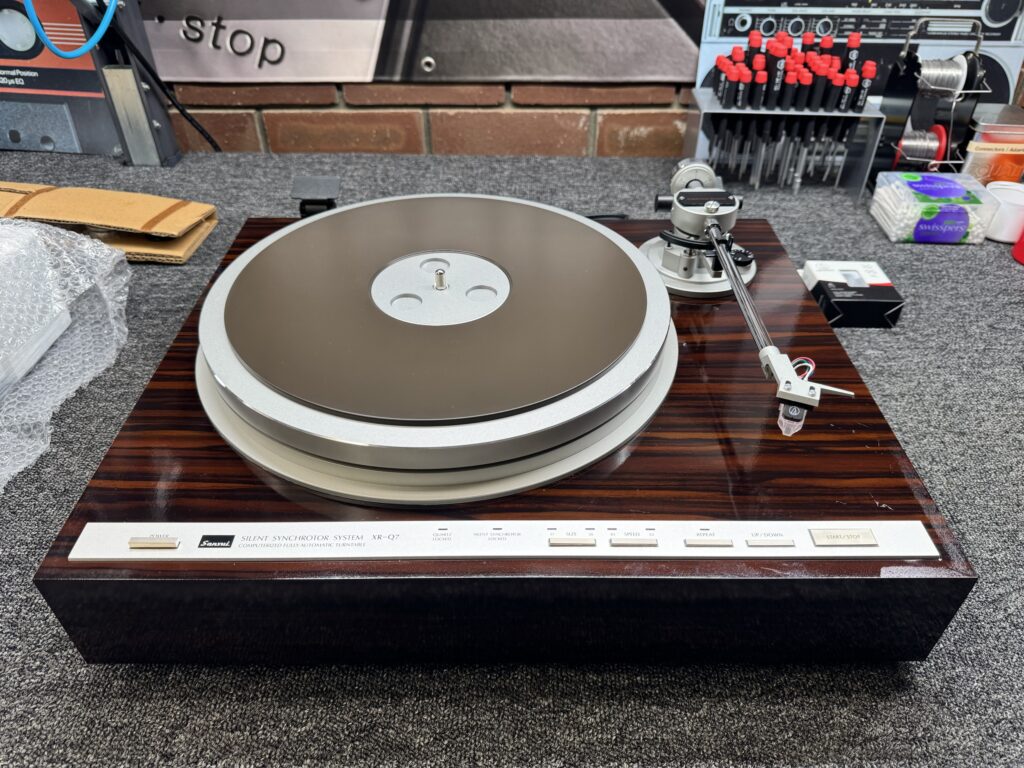
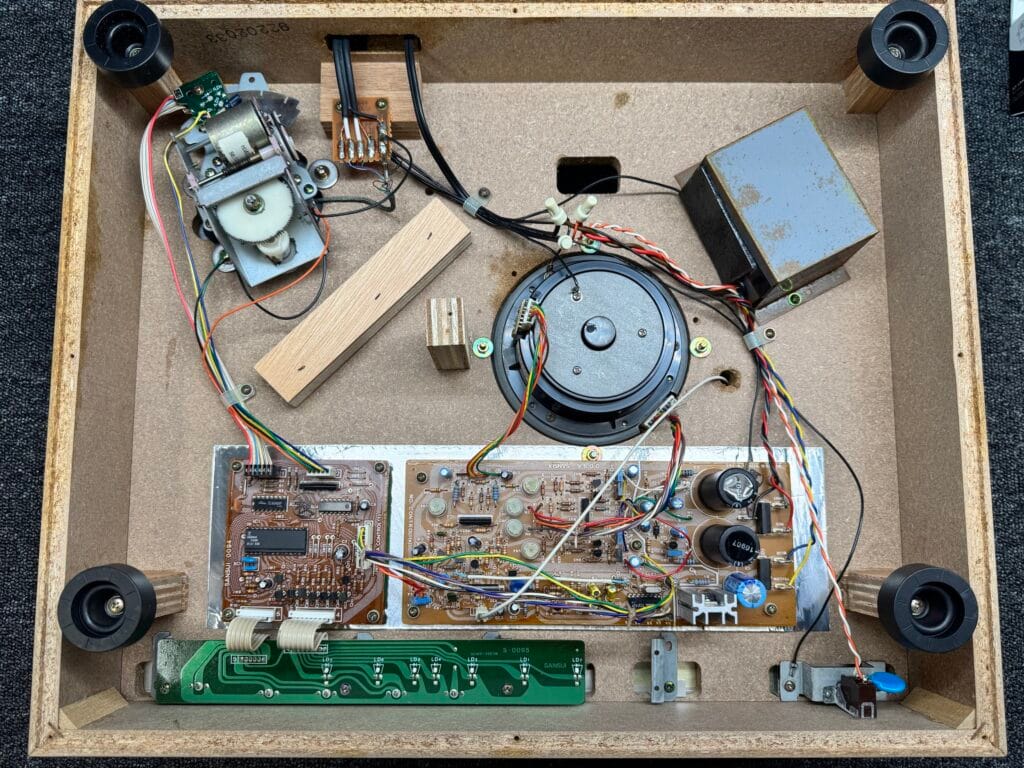
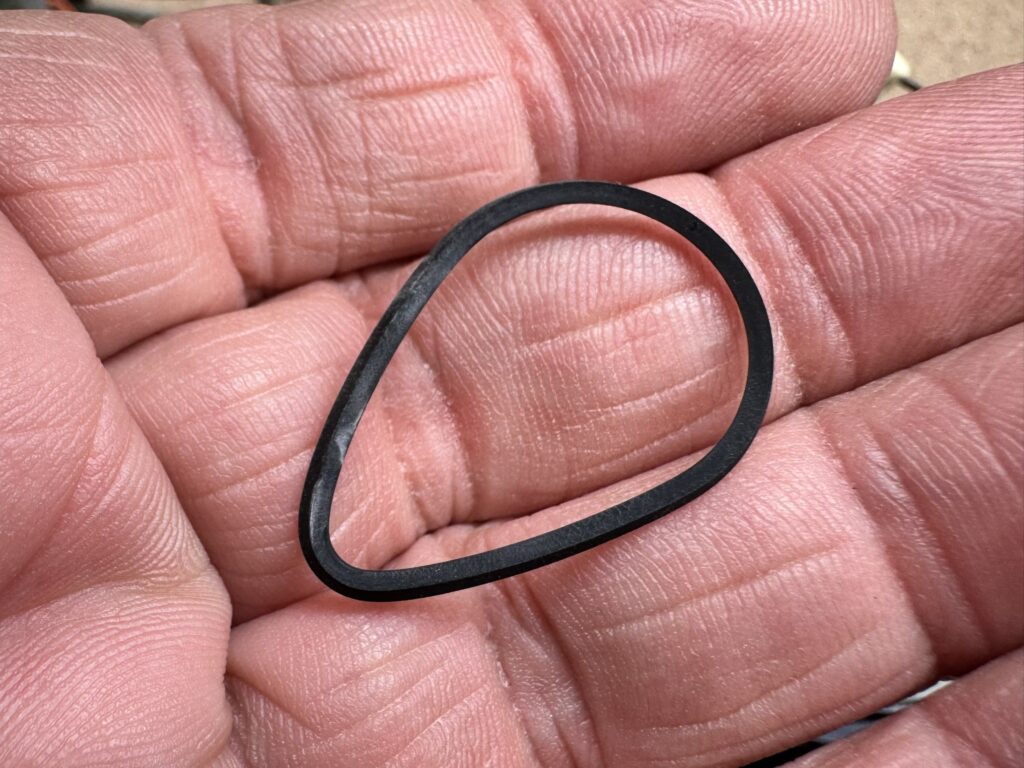
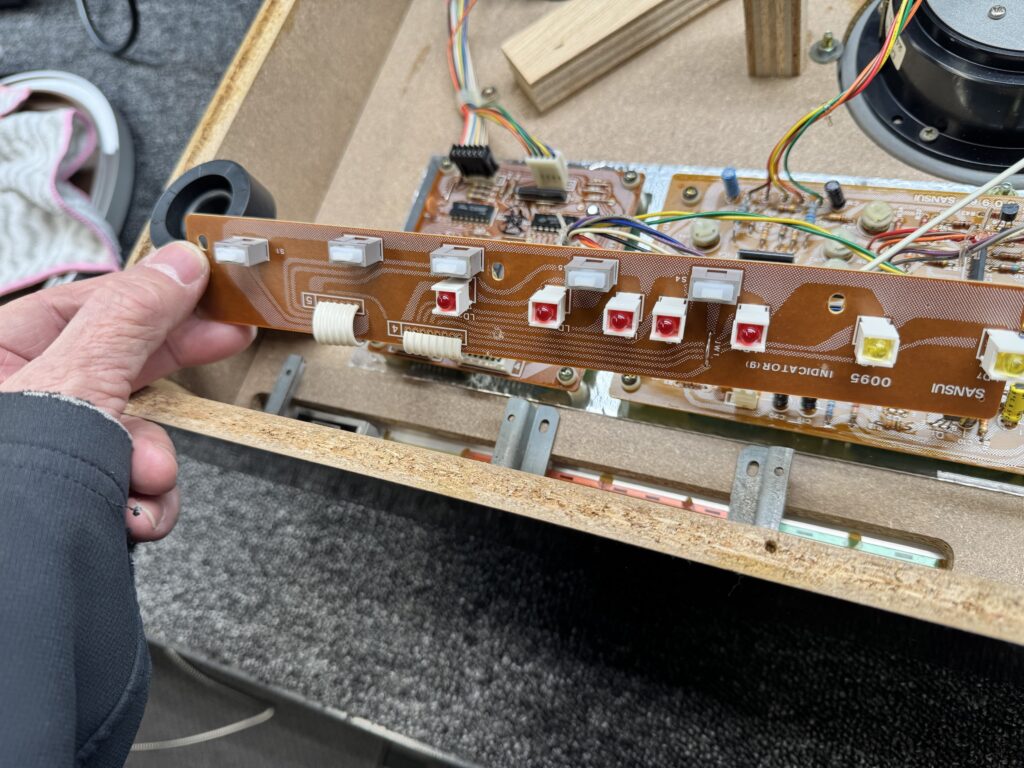
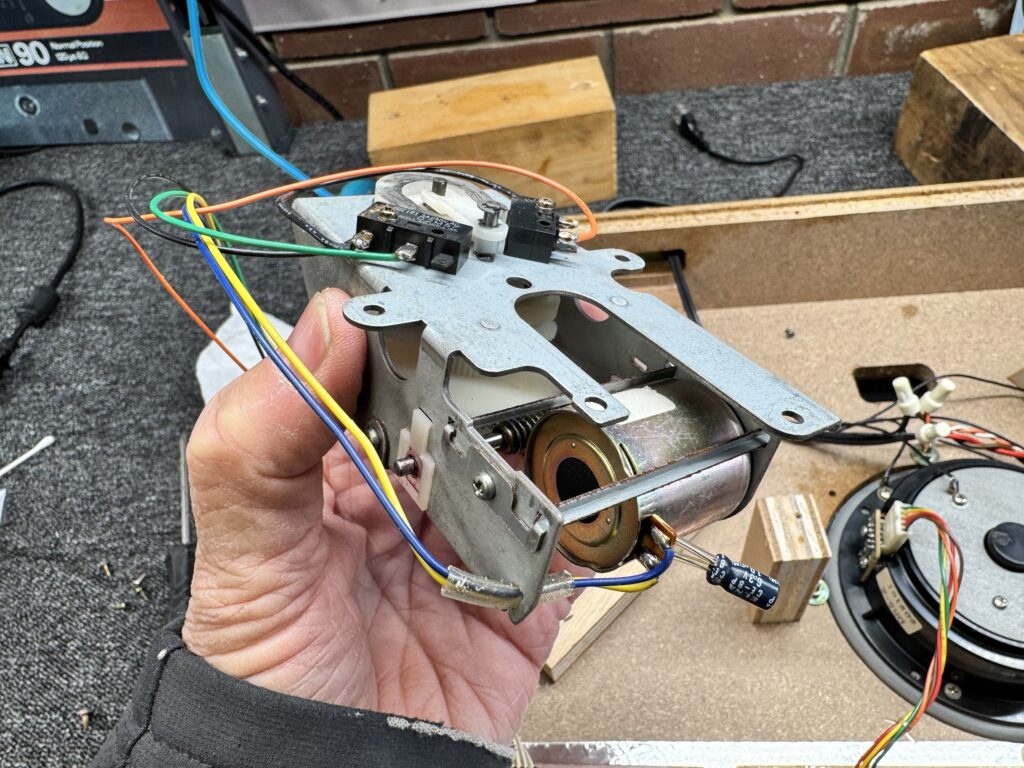
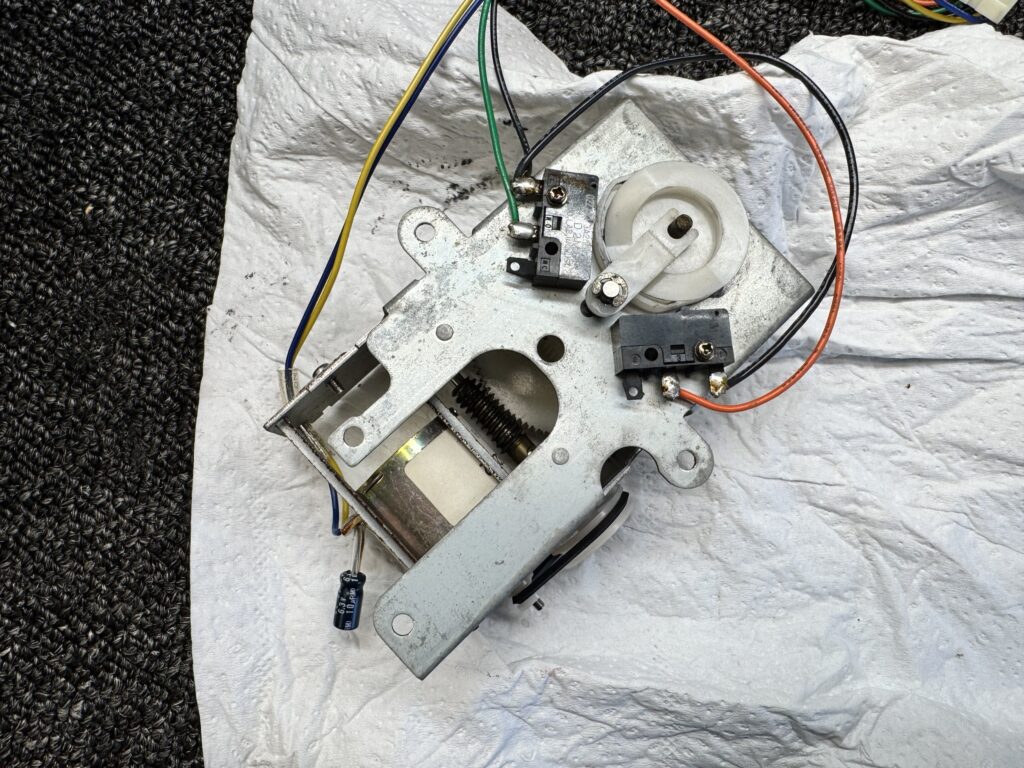
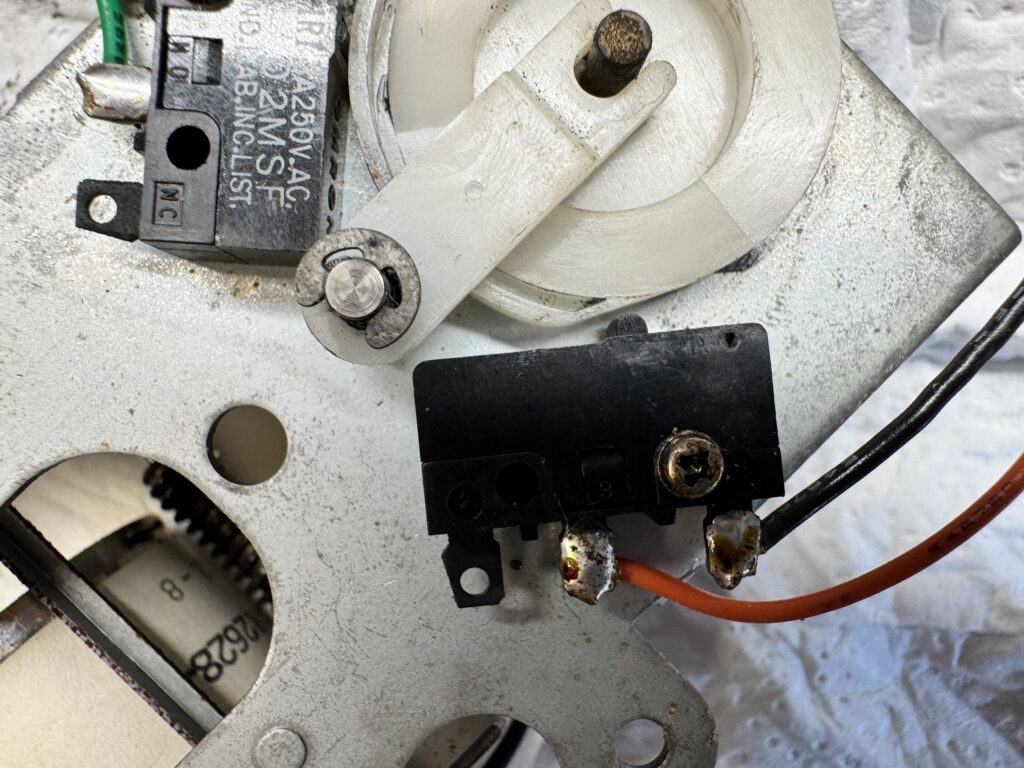
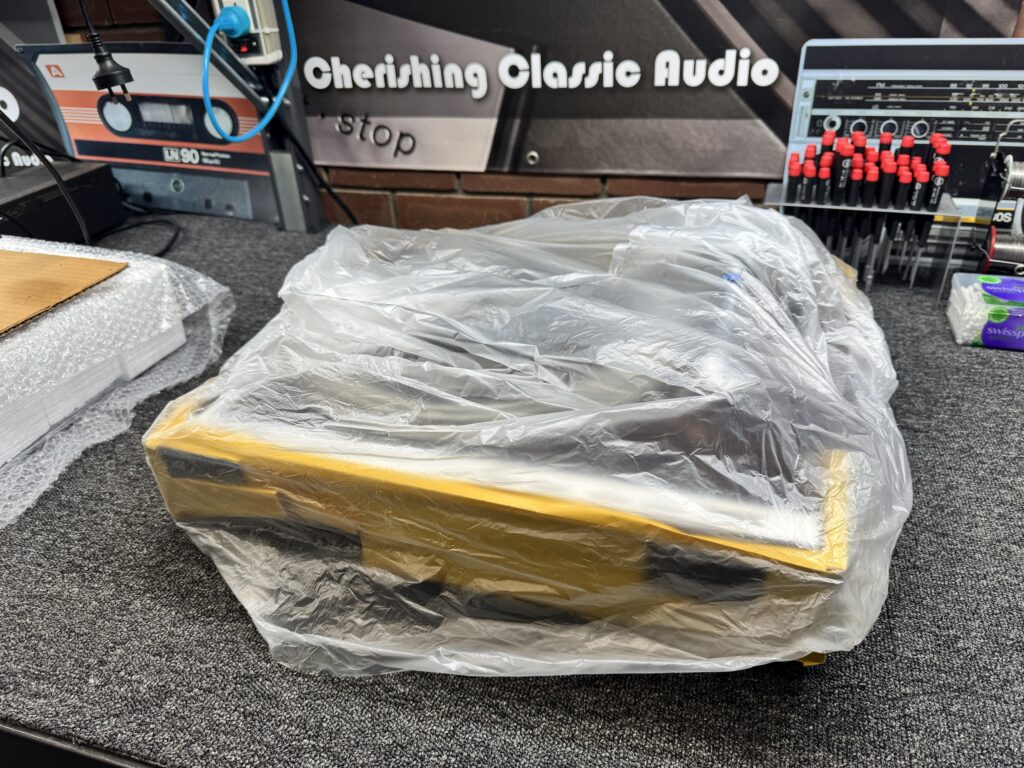
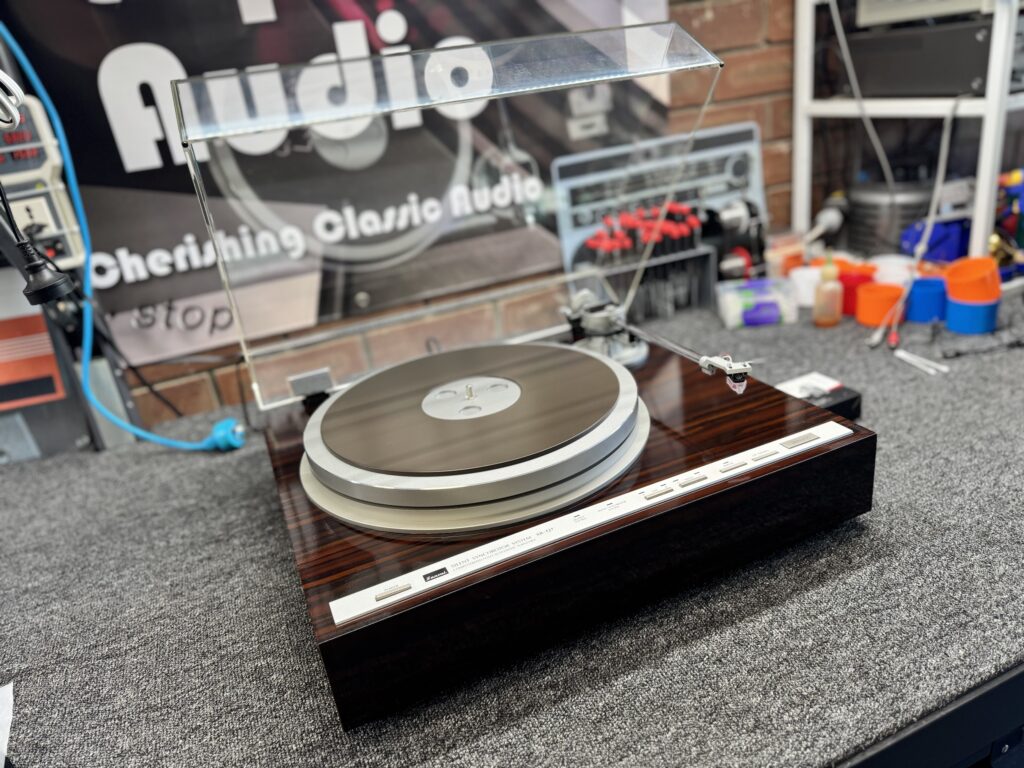
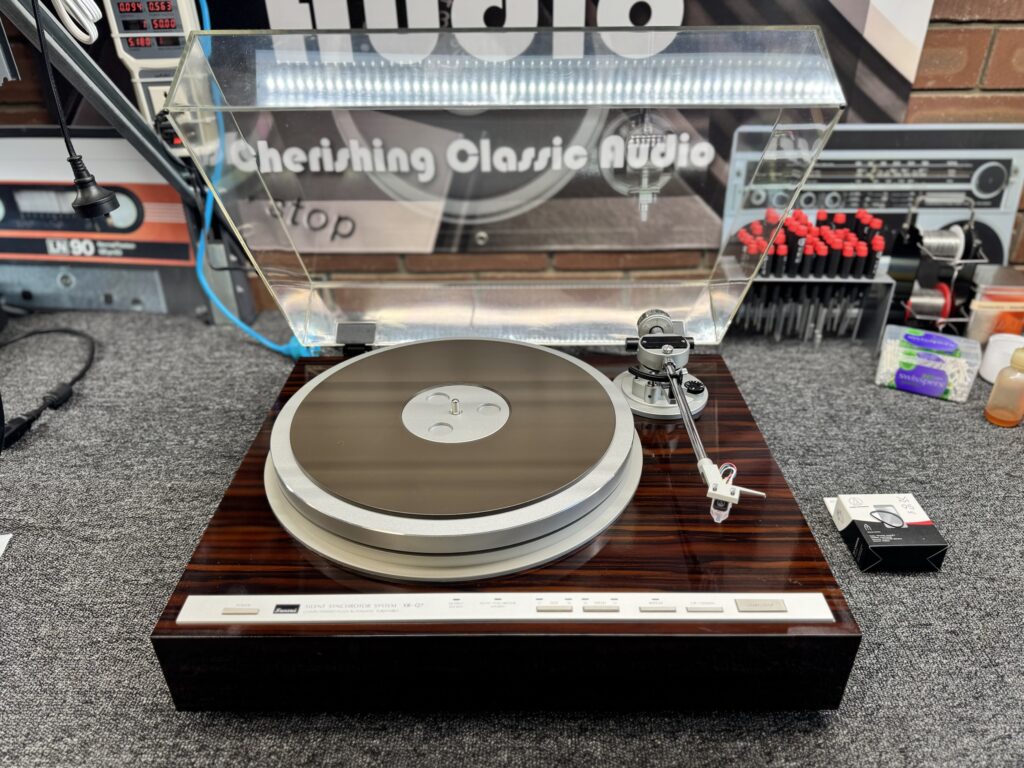
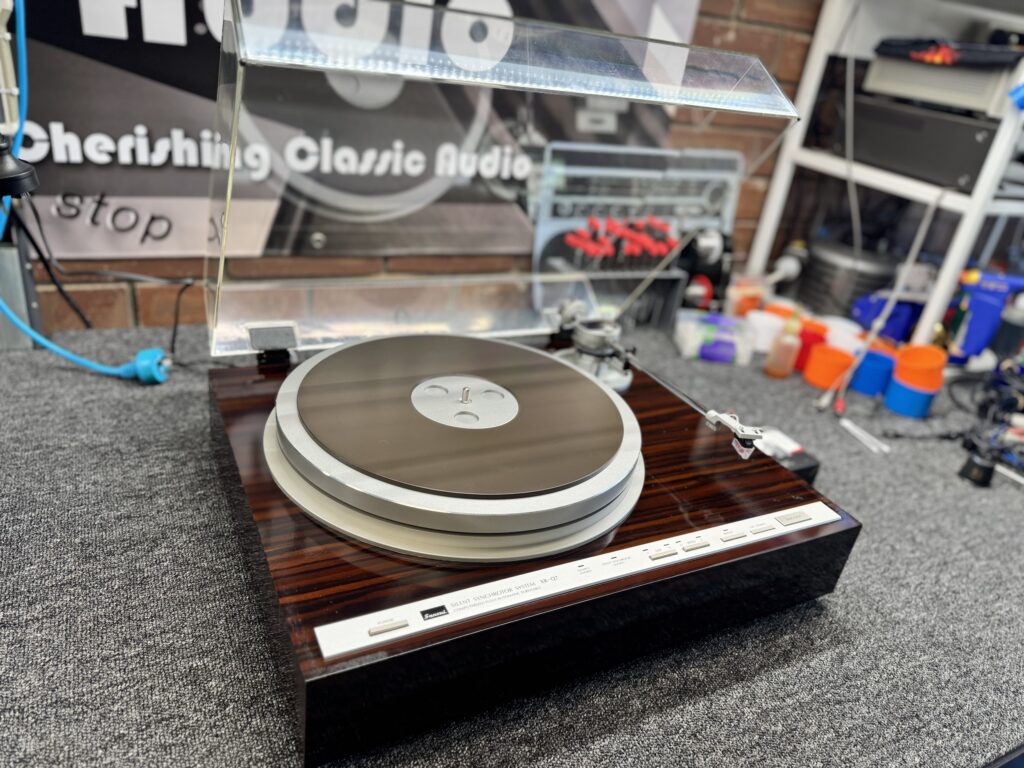
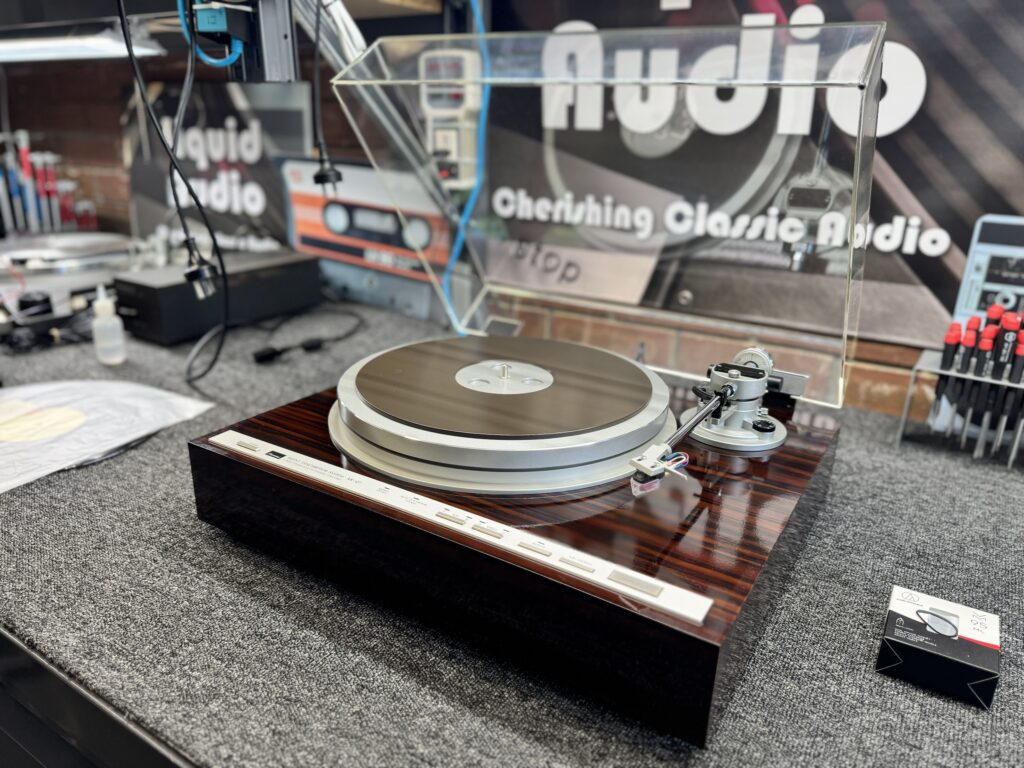
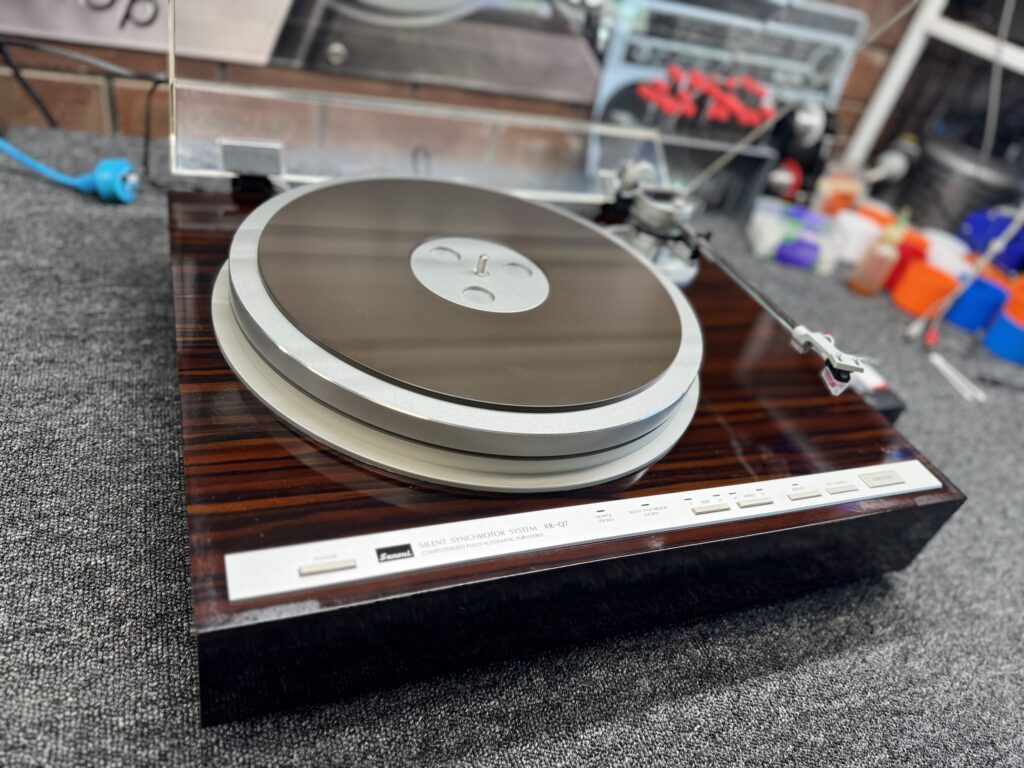
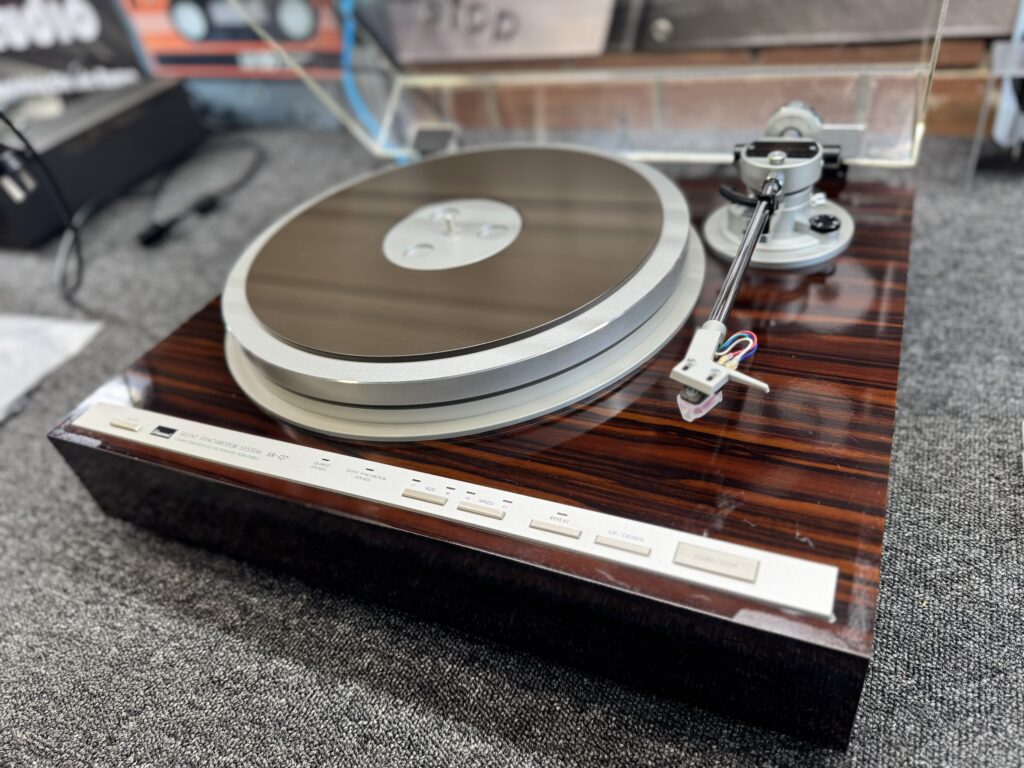
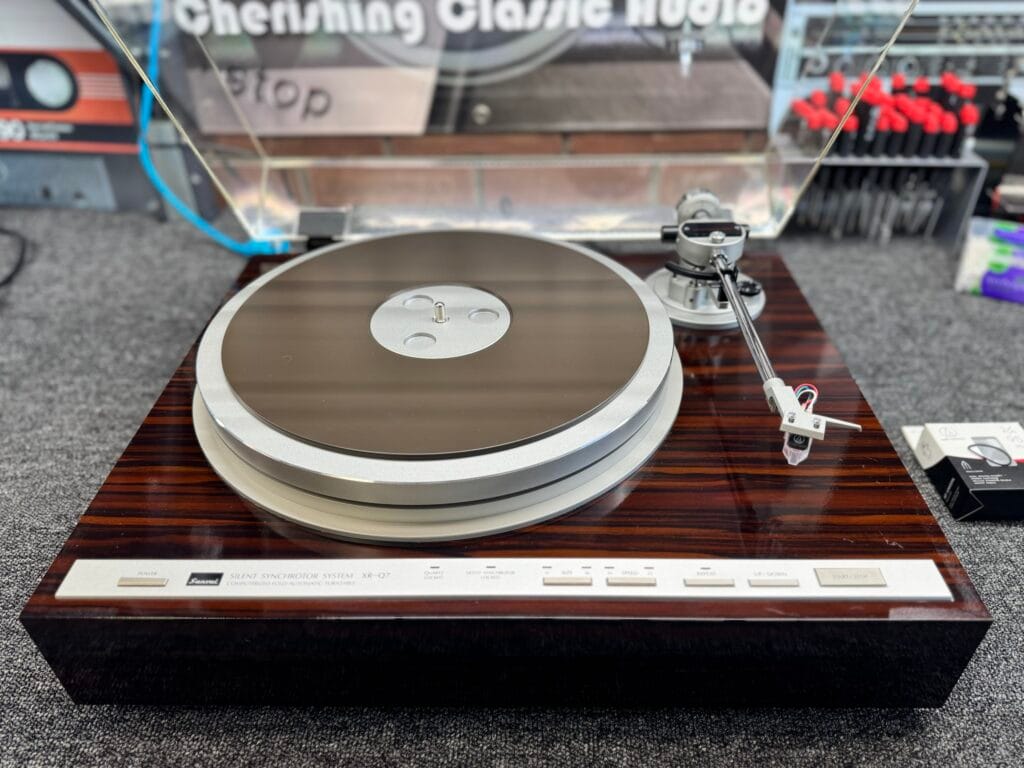
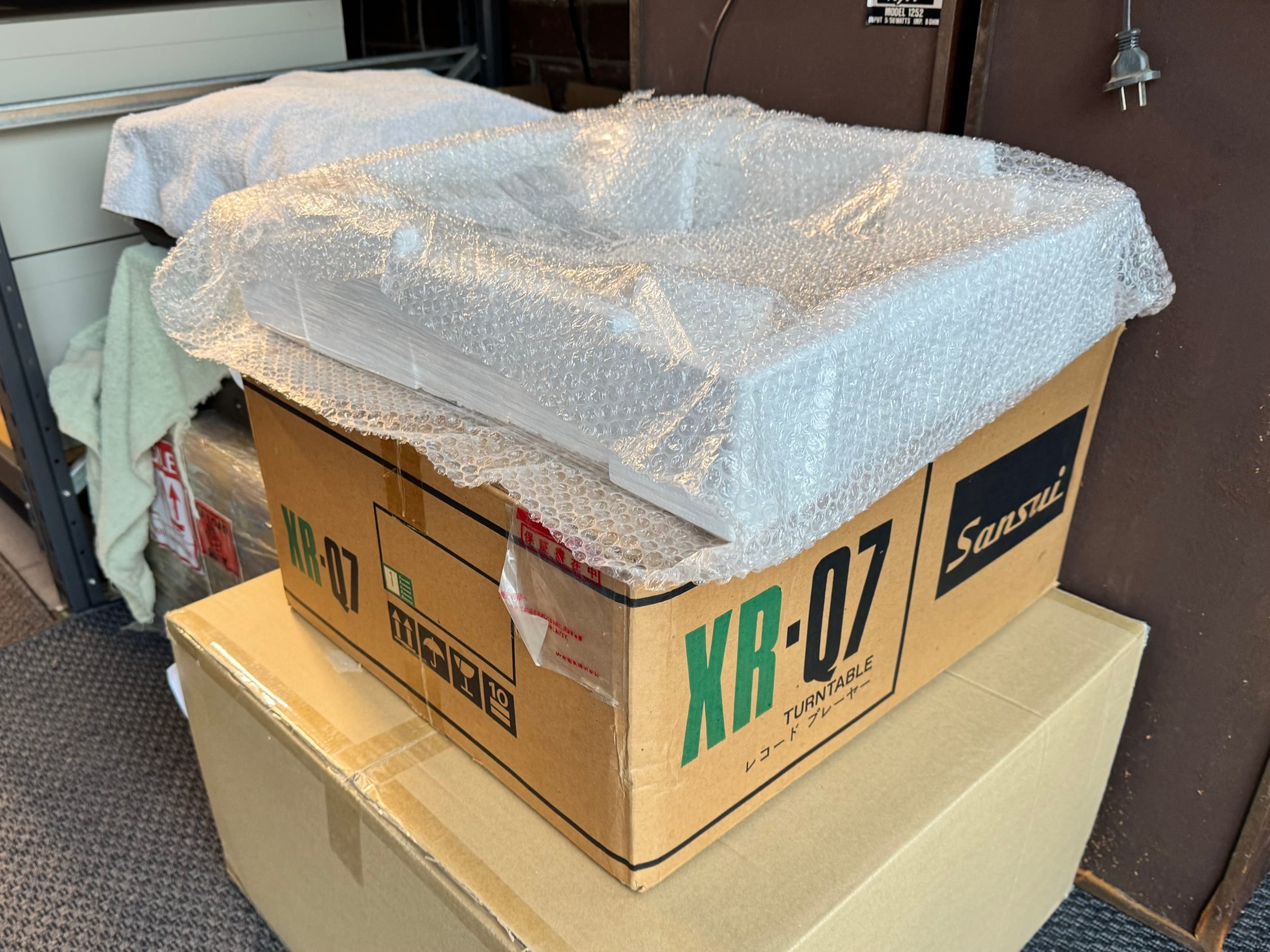
Features
Rob contacted me, telling me he found an apparently new old stock Sansui XR-Q7 in Japan and wanted to buy it. His proviso was that I commission it for him and repair any potential issues. I told him that, of course, I would, but that, like other later Sansui turntables, there would almost certainly be issues. I also pointed out that it would not be the best turntable he could get for his money. Thankfully, Rob already knew all that!
The Sansui XR-Q7 is a decent mid-tier direct drive turntable from around 1981, featuring a chipboard chassis, vinyl wrap, two quality tonearm wands, quartz-locked speeds and made during the last hurrah of the golden era of vinyl. It was relatively affordable, at around 75,000 Yen, and a fully automatic model, meaning everything from playing to stopping playback is handled automatically.
Fully automatic turntables are my least favourite type of turntable, but a type that many love for the simplicity of operation. With full automation, all an owner needs to do is put the record on the platter; the turntable does the rest with the push of a button. Very futuristic, in 1980. This is, of course, like most other fully automatic models, including the similarly beautiful, but better, Pioneer PL-L1000 I wrote about earlier this year.
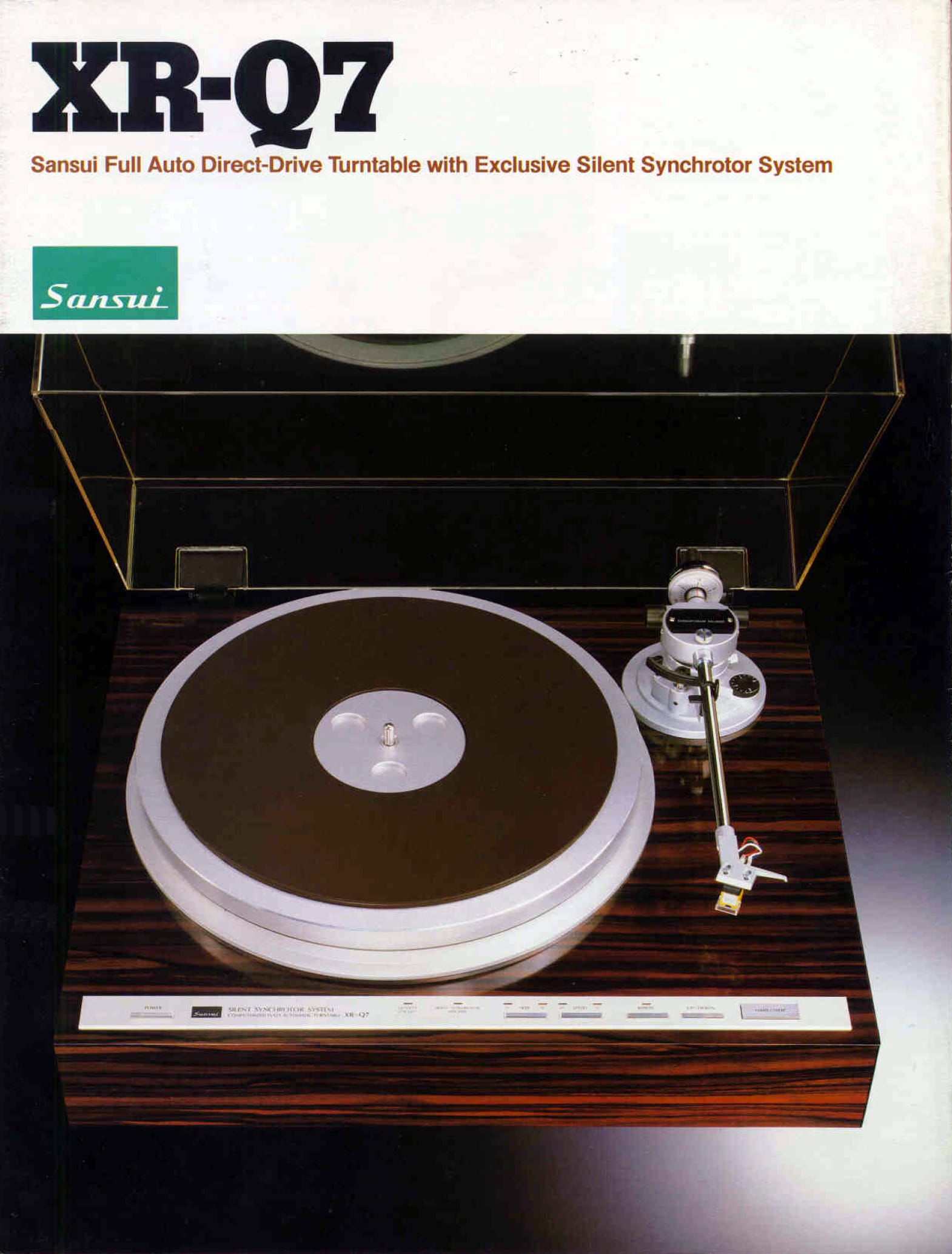
Edited, from Sansui’s press materials:
The newly developed silent synchrotor system, featured in the XR-Q7 turntable, has been proven to prevent the reactionary force generated by the direct drive motor from vibrating the turntable cabinet.
In addition, the tone arm of the XR-Q7 is made of carefully selected materials. The arm base is made of zinc die-cast, the arm pipe is made of brass, and the head shell is made of aluminum die-cast. This is a highly rigid design.
The pipe of the tone arm part can be replaced at the root of the arm base, and the straight arm with fixed head shell as standard equipment and the S-shaped tone arm with universal connector can be replaced.
The height adjustment is ± 3 mm so that it can be adjusted according to the cartridge.Equipped with photoelectric detection type non-contact full auto mechanism controlled by 4-bit microcomputer, each auto operation of auto lead in, return, auto cut and auto repeat is possible.
Manual operation can also be performed without switching. The turntable rotates when the arm is moved from the arm rest by hand, and the tone arm can be moved up and down with the Up/Down keys.Other features of the Sansui XRQ7 include a quartz-servo system for perfect speed control, an amazing vibration-free D-O-B tonearm with vibration-free tonearm base, precise computer-controlled fully automatic operation and a solid platter mat which helps assure optimum reproduction quality.
That’s all well and good, but these press materials don’t mention the rather cheap plastics used or the vinyl wrap veneer, which tend not to age well. On the flip side, when properly set up and running, these decks are excellent performers and the arm moves incredibly smoothly, minimising any risk of harm to precious records.
The two arm wands are a nice touch, though I doubt most acquiring one of these decks will be fortunate enough to find one with both arm wands and counterweights, so just be careful when looking for these old beauties. Aside from that, the XR-Q7 is a soilid performer and generally more reliable than the XR-Q9 which generally has me cursing when I work on one. The arm drive mechanism in the XR-Q7 is much better in my opinion.
For those who enjoy my infrequently made videos, I made a detailed one about the XR-Q7 unboxing and repair for this article:
Sansui XR-Q7 Specifications
With corrections, courtesy of Vinyl Engine
Type: 2-speed, fully automatic turntable with synchrotor and quartz servo system
Motor: Coreless and brushless Hall DC motor
Drive system: direct drive with synchrotor system
Platter: 330mm aluminium alloy
Wow and flutter: less than 0.009%
Signal-to-noise ratio: better than 80dB
Speeds: 33 and 45rpm
Tonearm: Statically balanced straight D-O-B tonearm AND S-shaped arm, with two-part pivot support
Effective length: 245mm
Overhang: 16mm
Offset angle: 22 degrees
Cartridge weight: 4 to 9.5g
Cartridge: SV-101 Dual magnet type
Dimensions: 490 x 180 x 430mm
Weight: 11kg
Unboxing, Commissioning & Repair
This work proceeded fairly typically, as follows:
- Unbox and inspect everything
- Assemble and test the XR-Q7
- Resolve any operational issues, repair and service the deck
- Set her up with a new cartridge
Unboxing & Inspection
I’ve owned and worked on a few NOS pieces of equipment over the years, so it’s worth mentioning a couple of points about NOS gear. New old stock, or NOS, means new and OLD. Whilst a piece described as NOS should be brand new, it will inevitably exhibit various signs of aging and may not even work, depending on the circumstances.
Signs of aging can be because the equipment was inspected originally in the store or upon first purchase, or then later, over the years, or prior to sale. It can also be because packing materials were expected to be removed within months of manufacture, rather than 45 years later.
These materials out-gas, and adhesives leave residues, which over time can mar certain finishes. Atmospheric effects can age plastics and metals, so how well sealed something is can be important. Fiddling with boxed equipment can also lead to subtle degradation, moving and changing the arrangement of things inside the carton.
None of this means a piece is no longer NOS, of course, only that it is old, located near humans, but still hopefully unused in the true sense. To verify NOS status, I always look for the sometimes microscopic witness marks, or the lack of them, more specifically, on things like headshells, connectors, screws, lids, wires, etc. As far as I could determine, this XR-Q7 is a NOS piece.
Enjoy the pics!
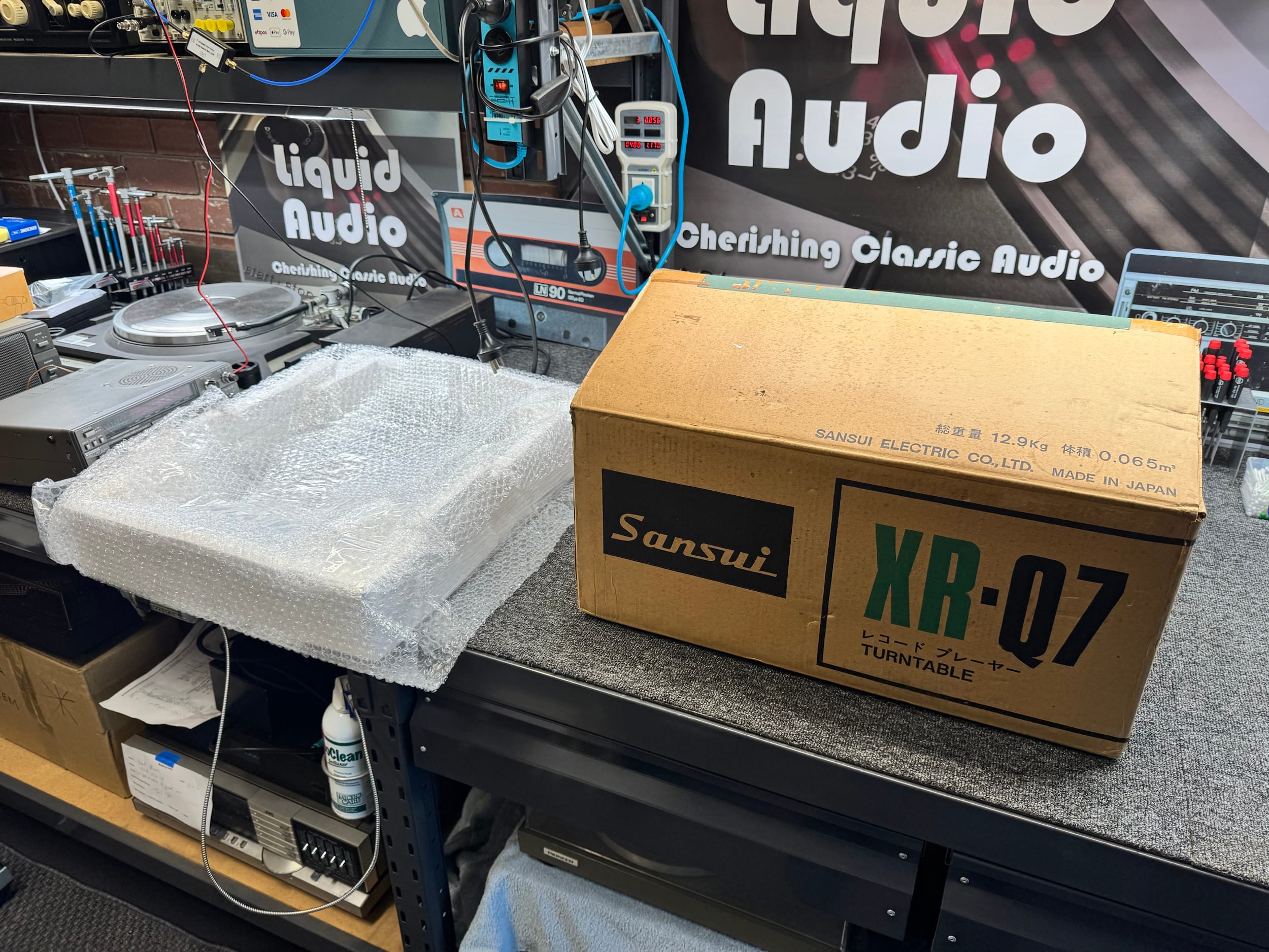
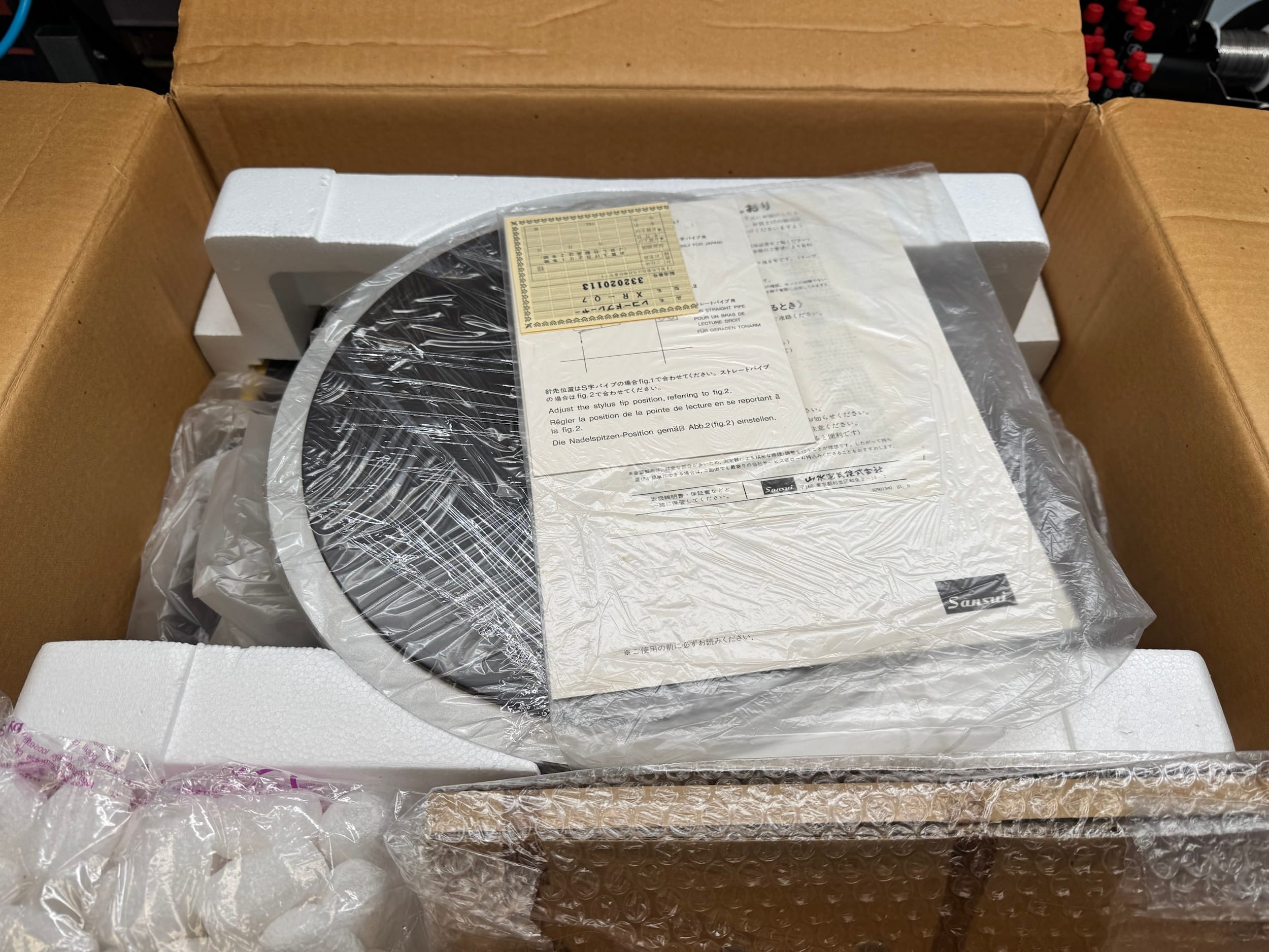
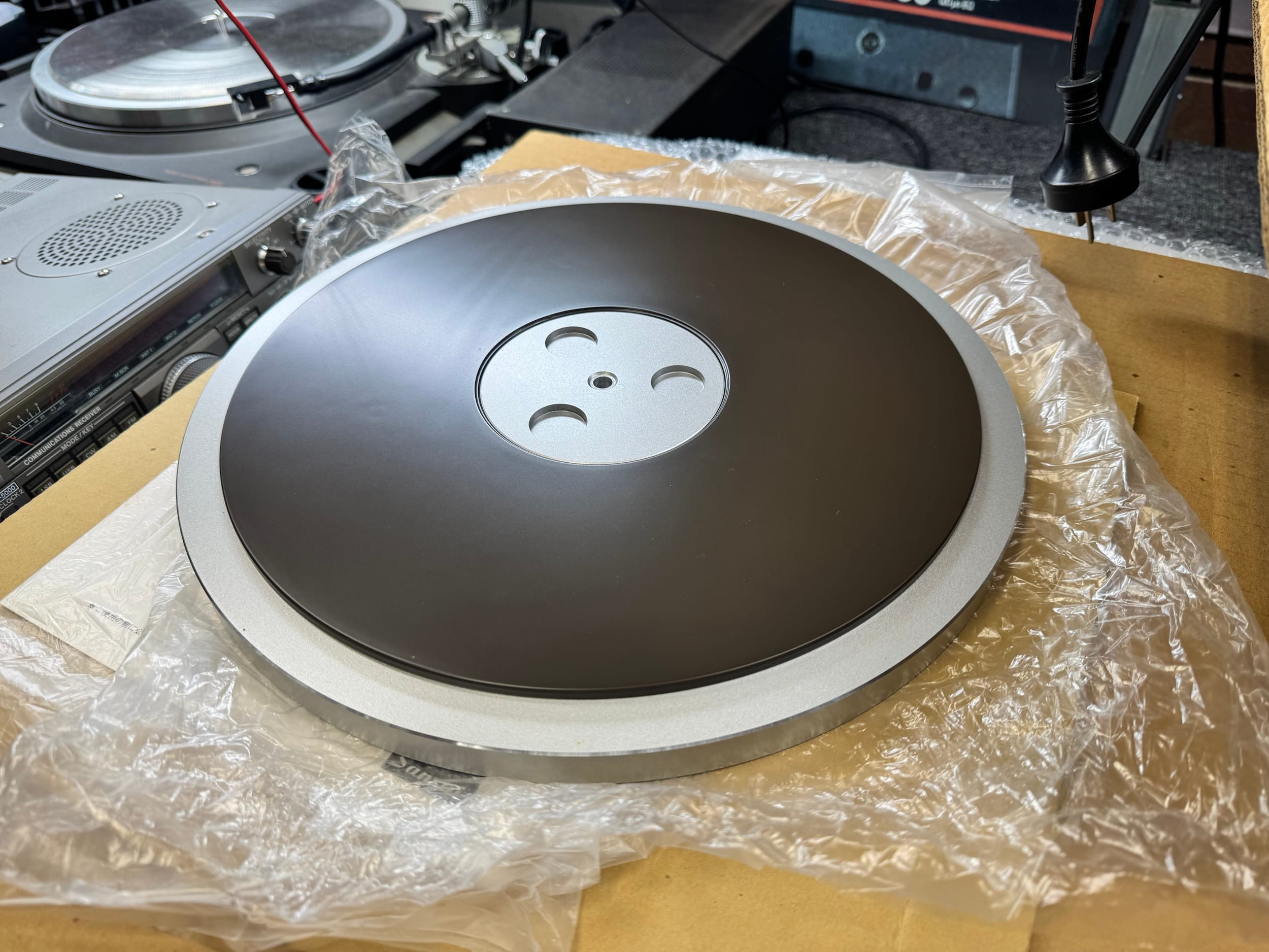
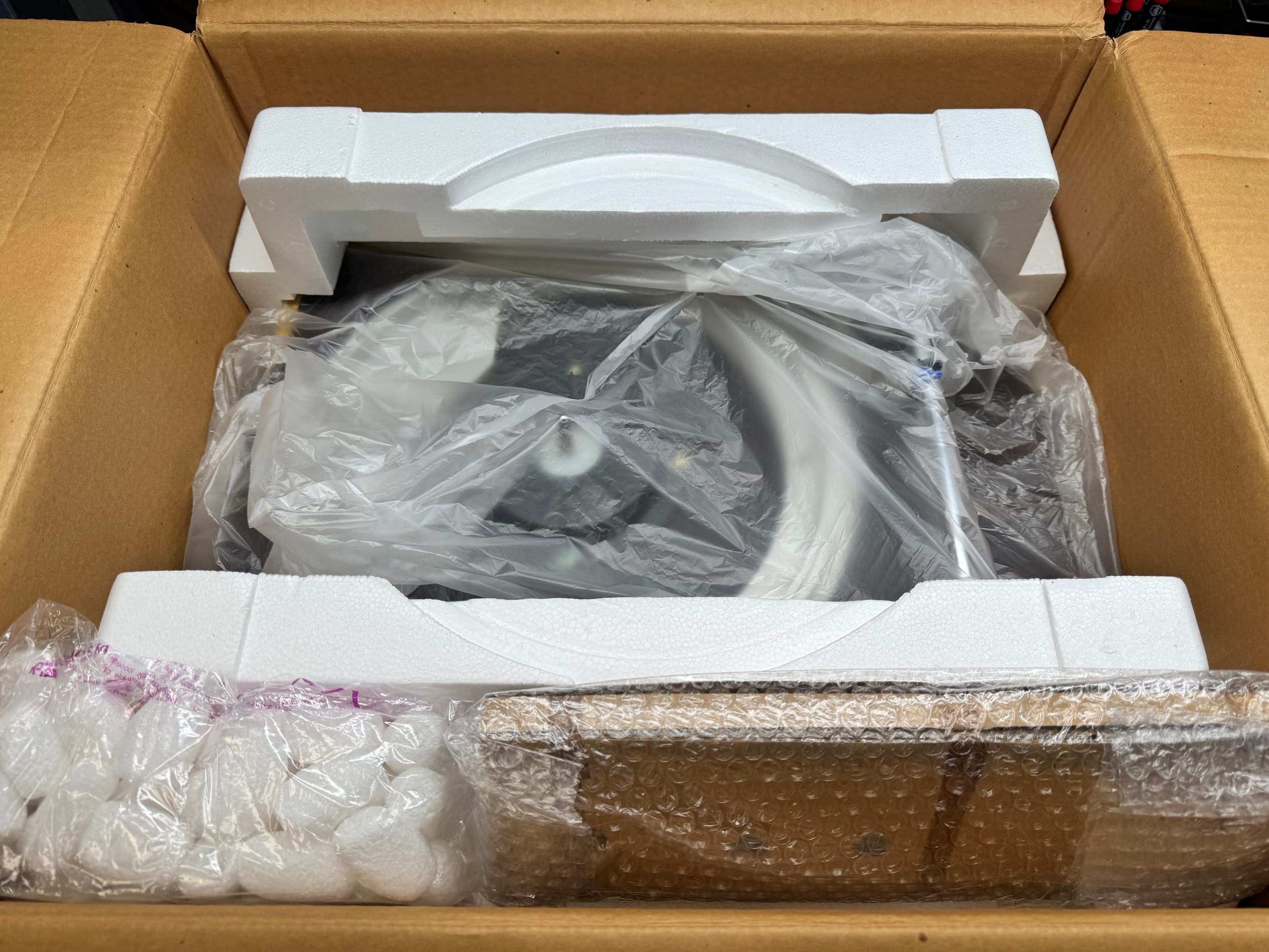
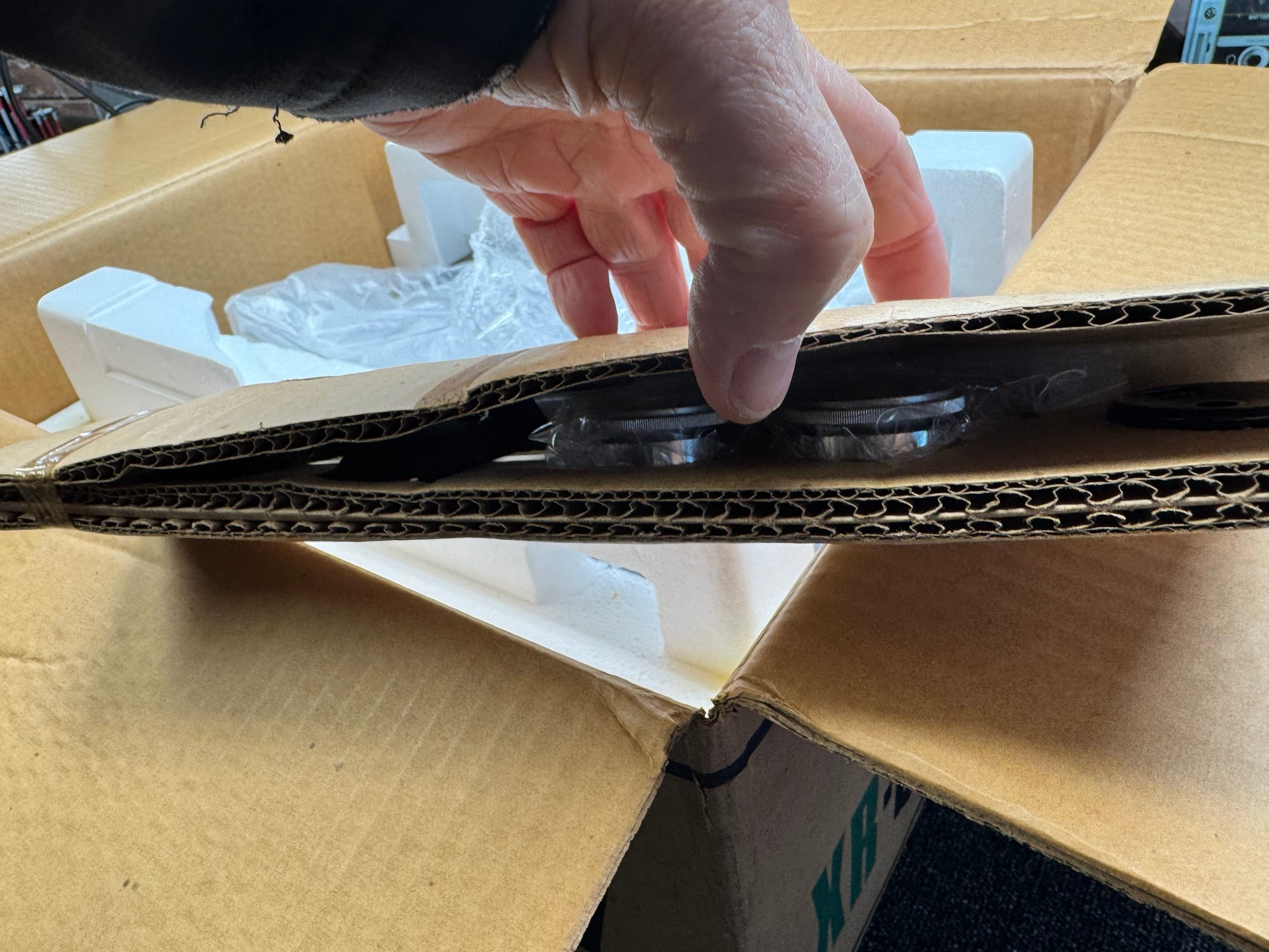
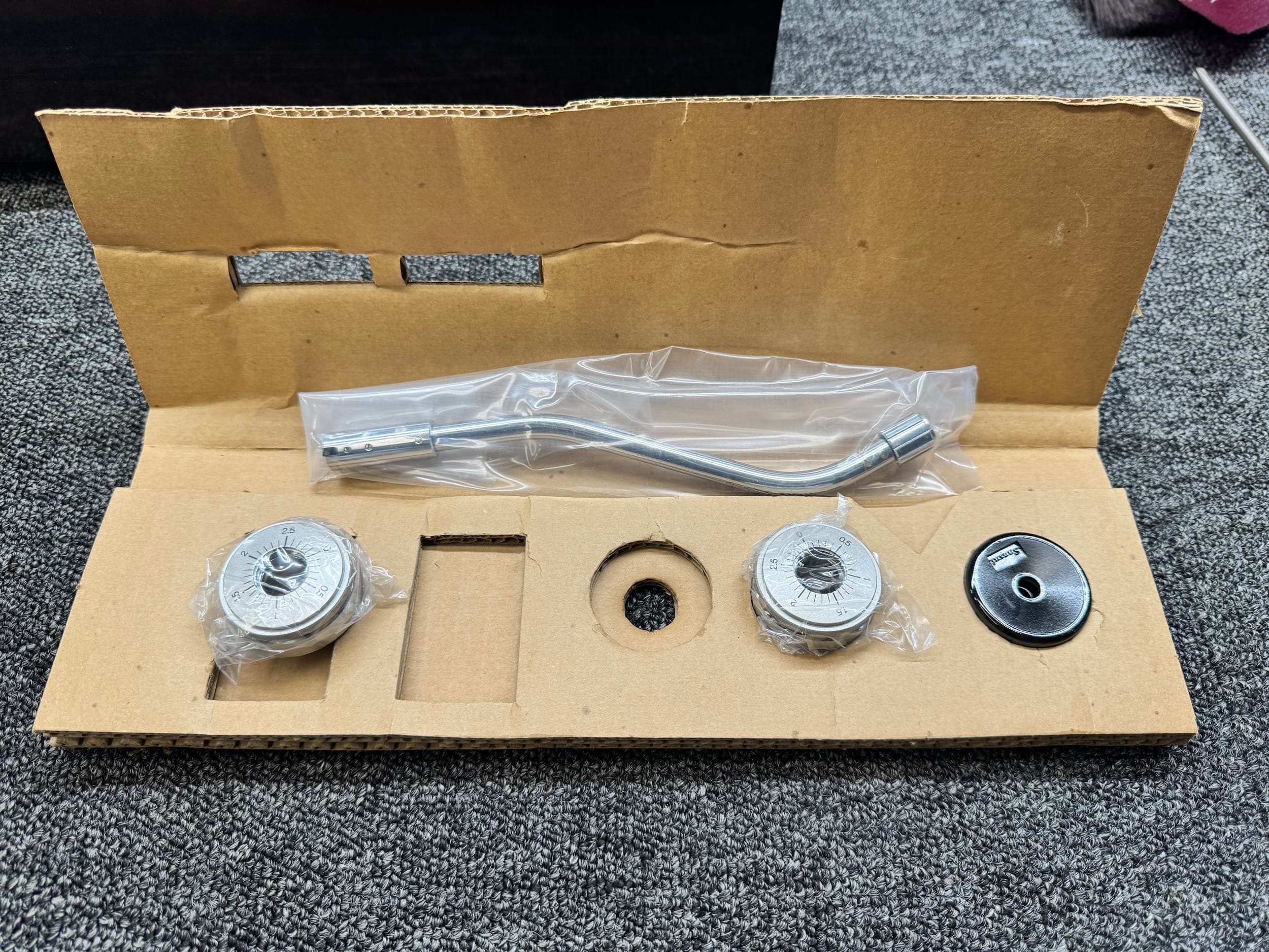

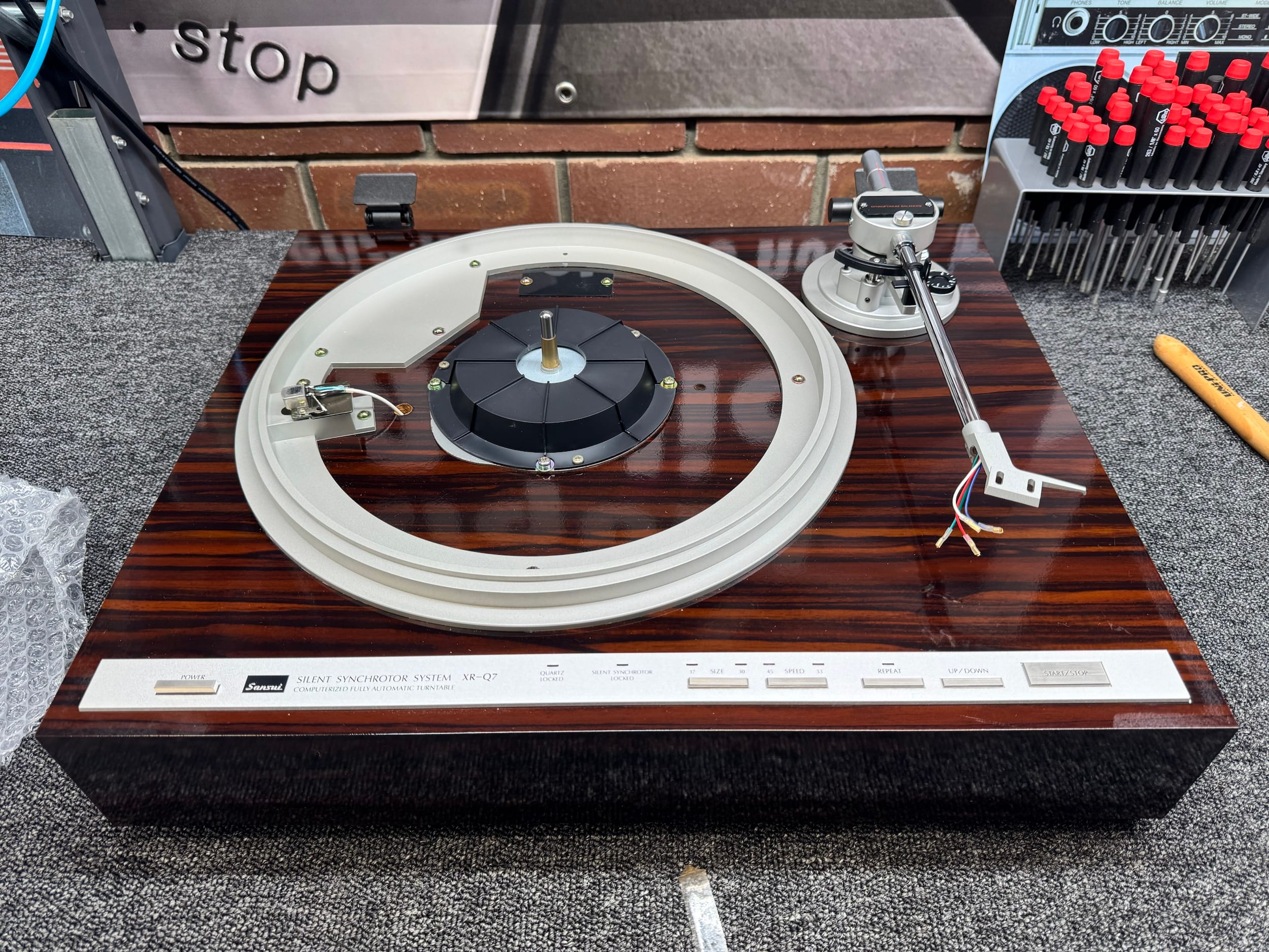
Set-up & Testing
With that in mind, time to fit a cartridge, the lid and run some tests.
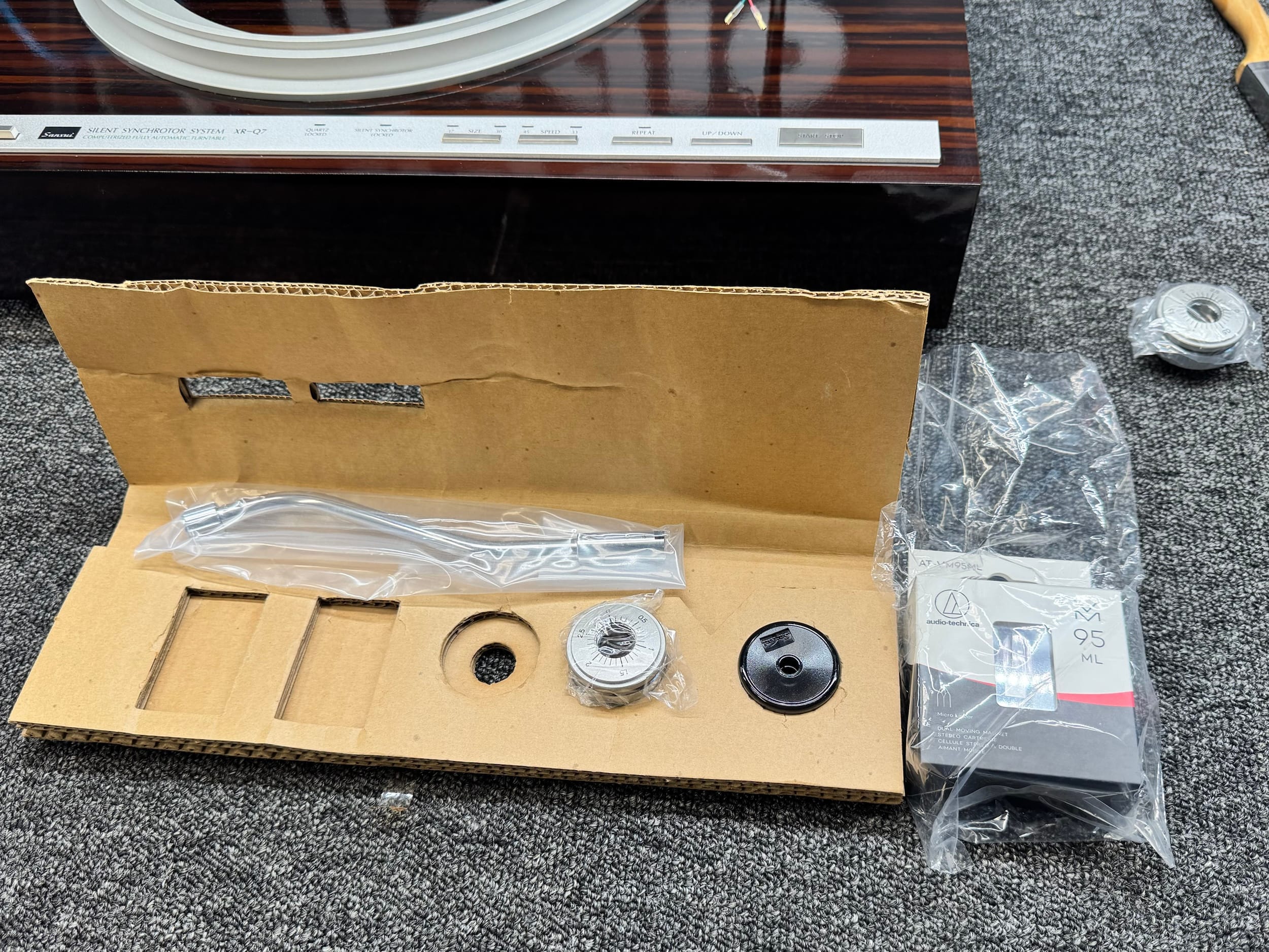
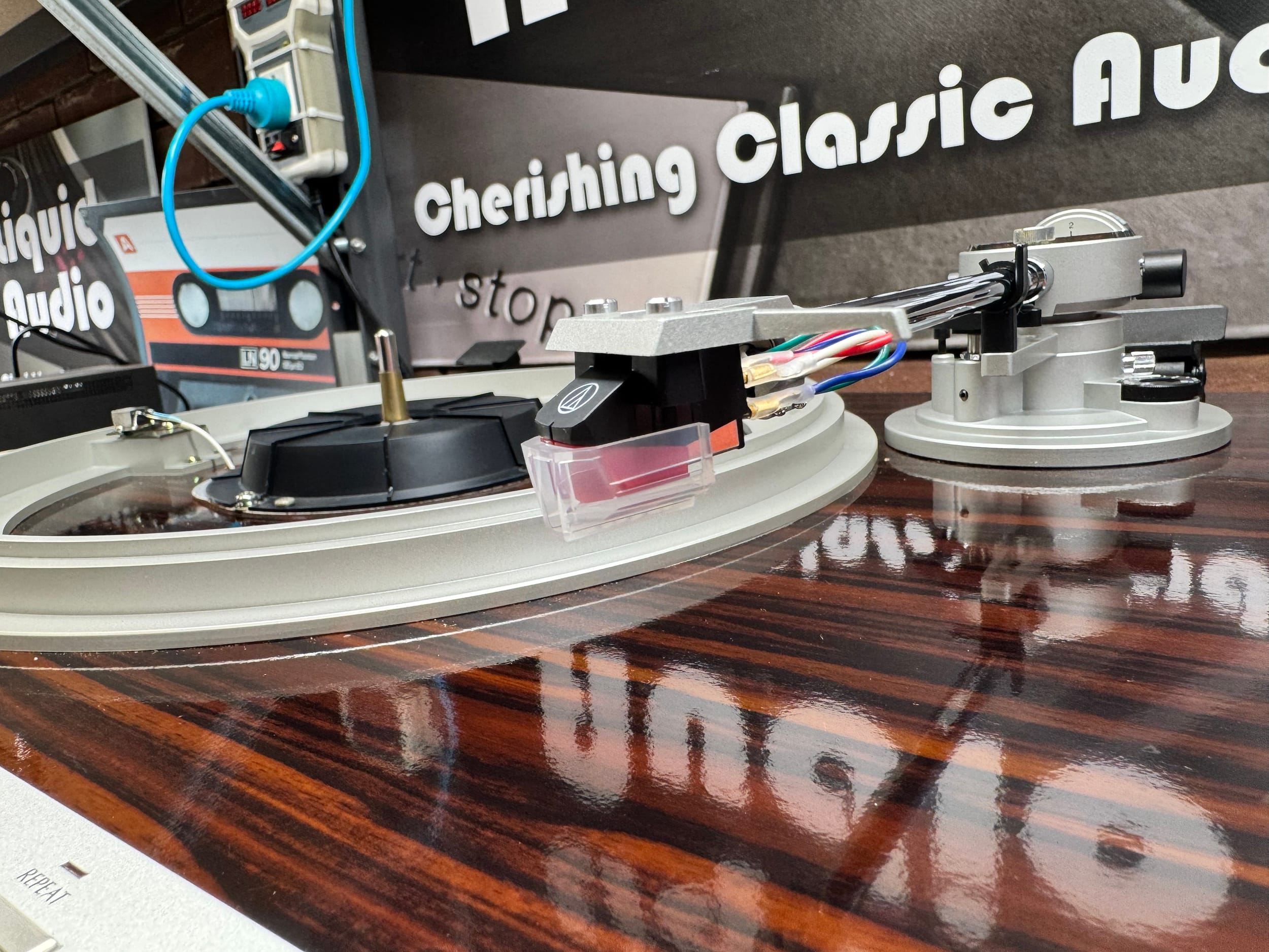
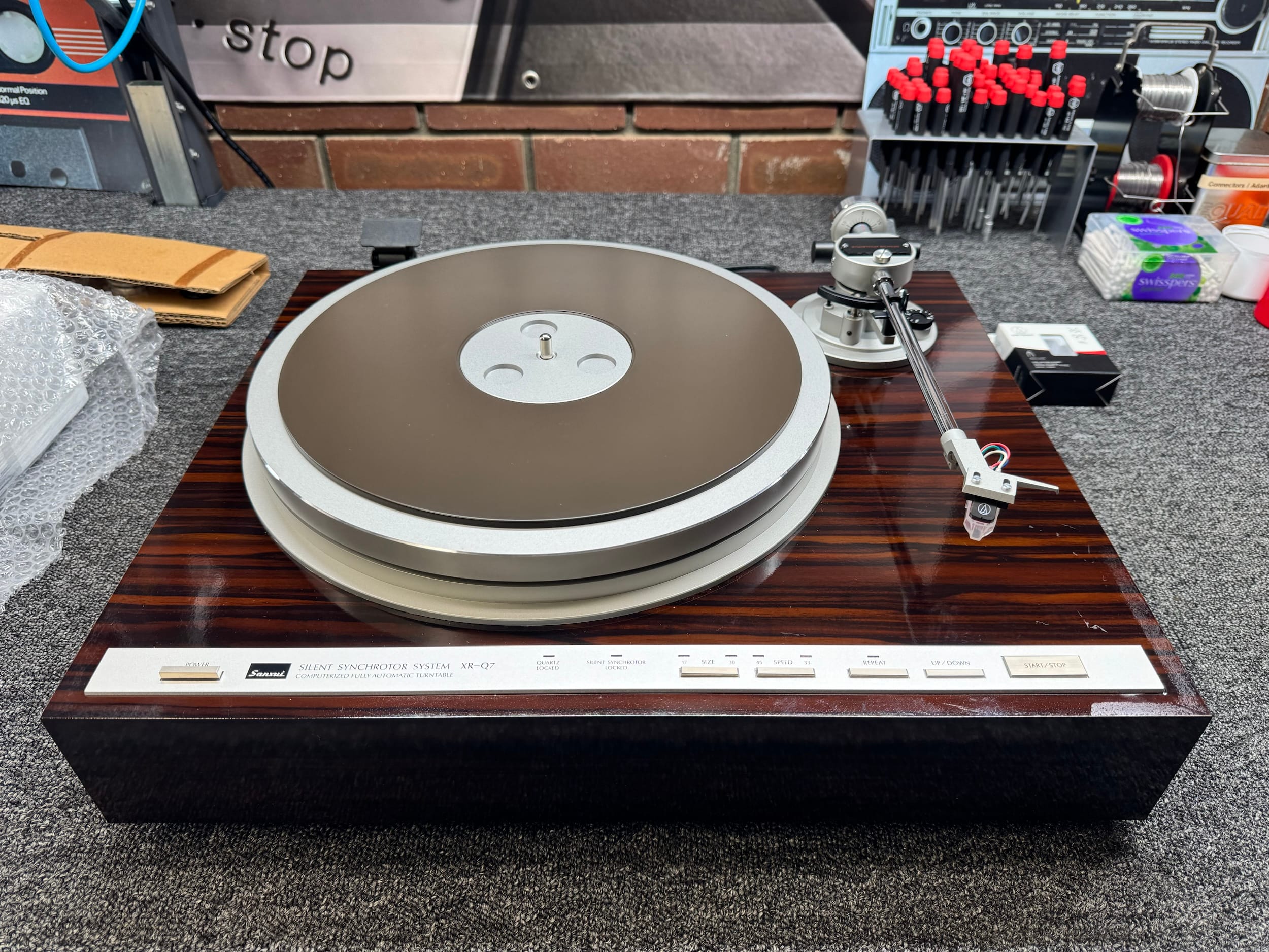
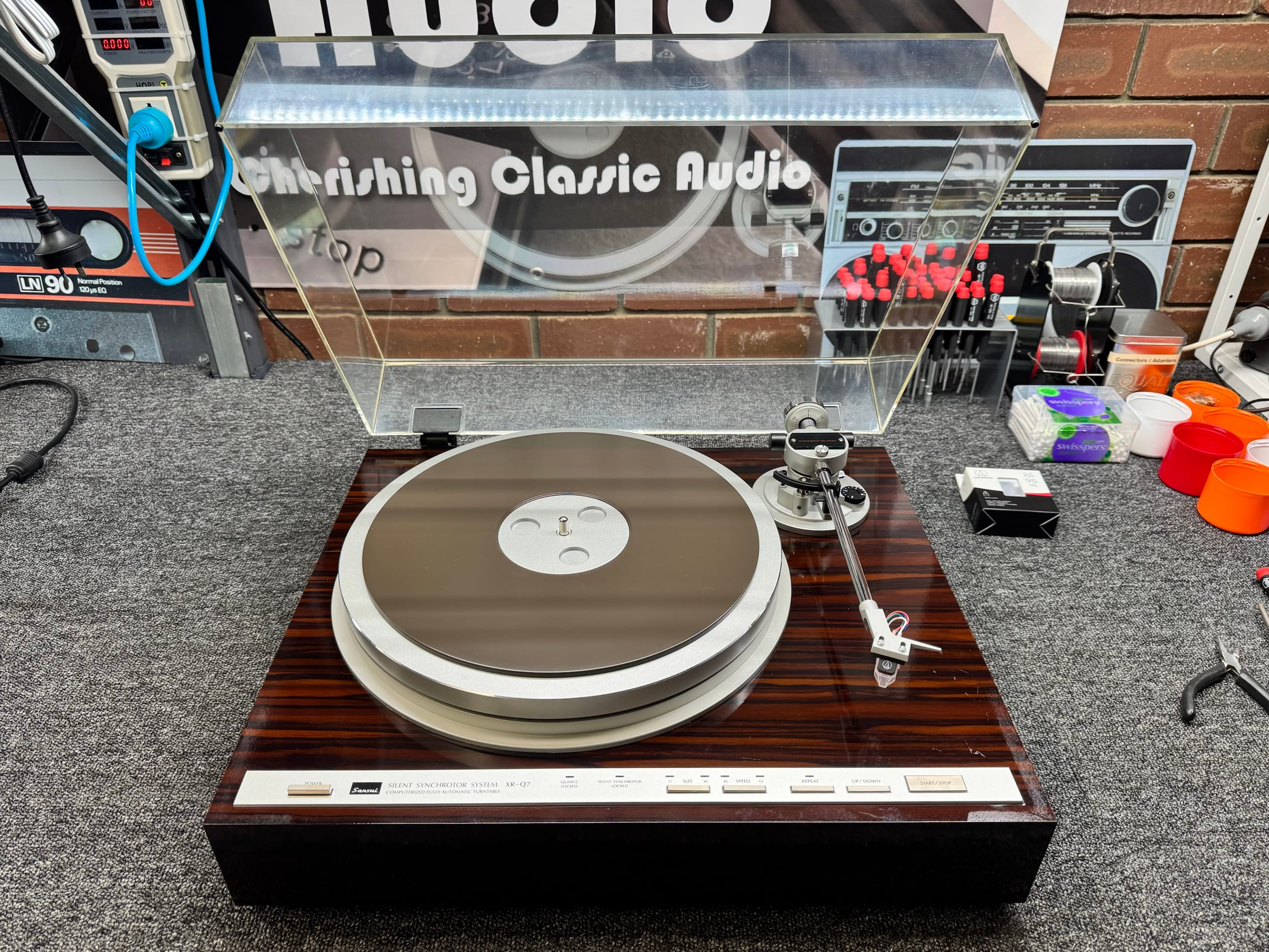
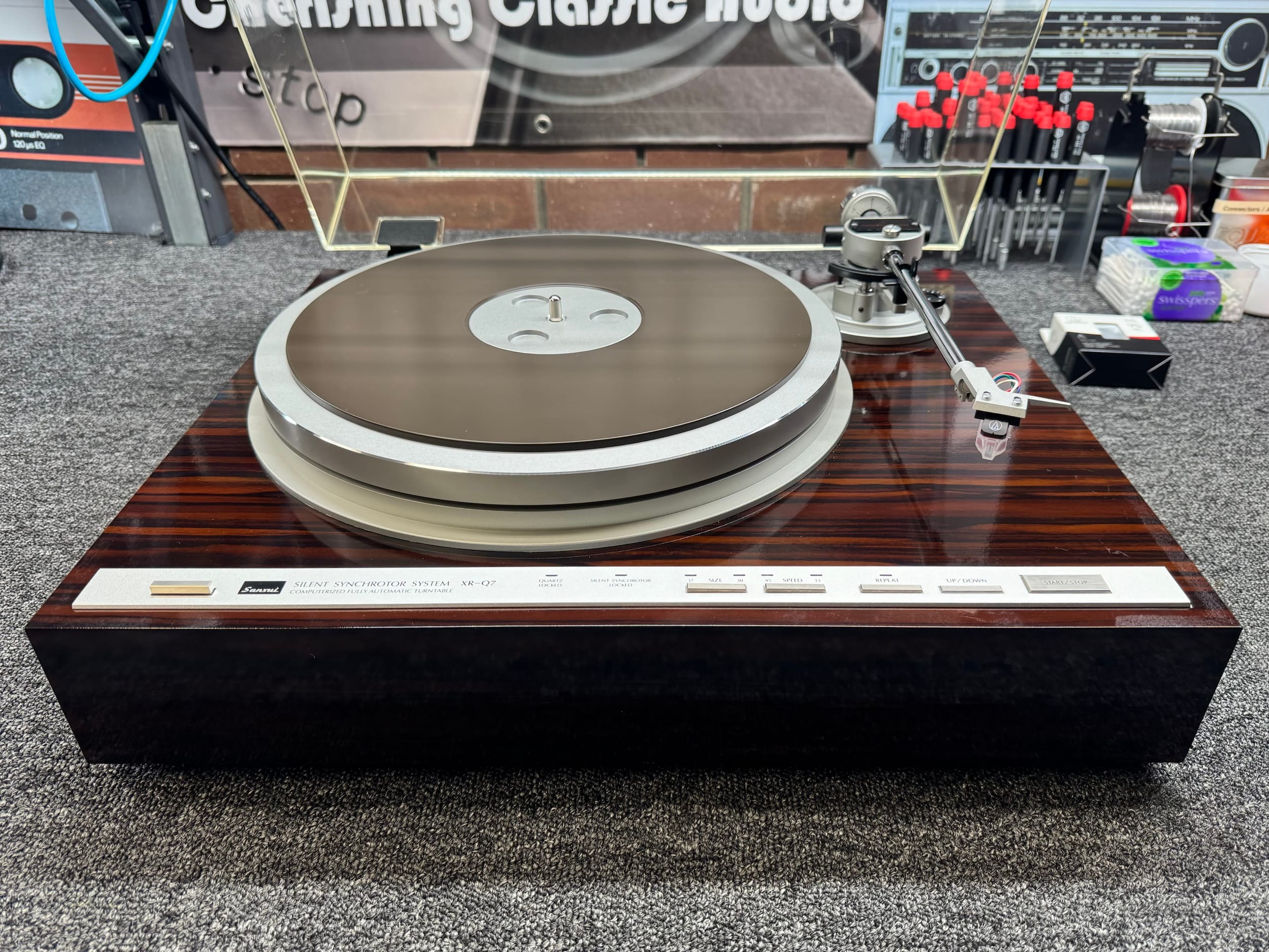
Service & Repair
In this part of the work, I carry out some basic and long-overdue maintenance and repair a rather tricky fault.
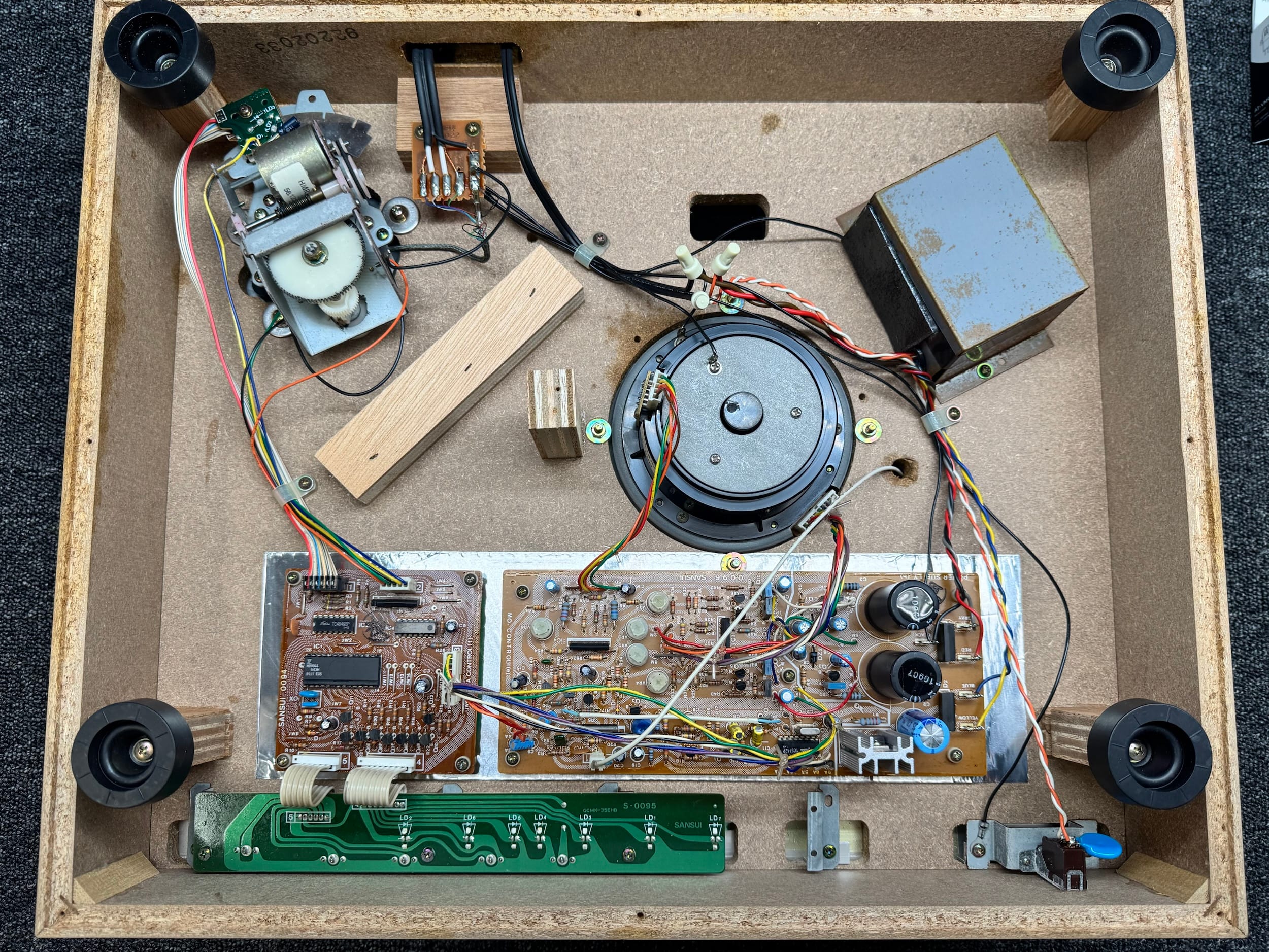
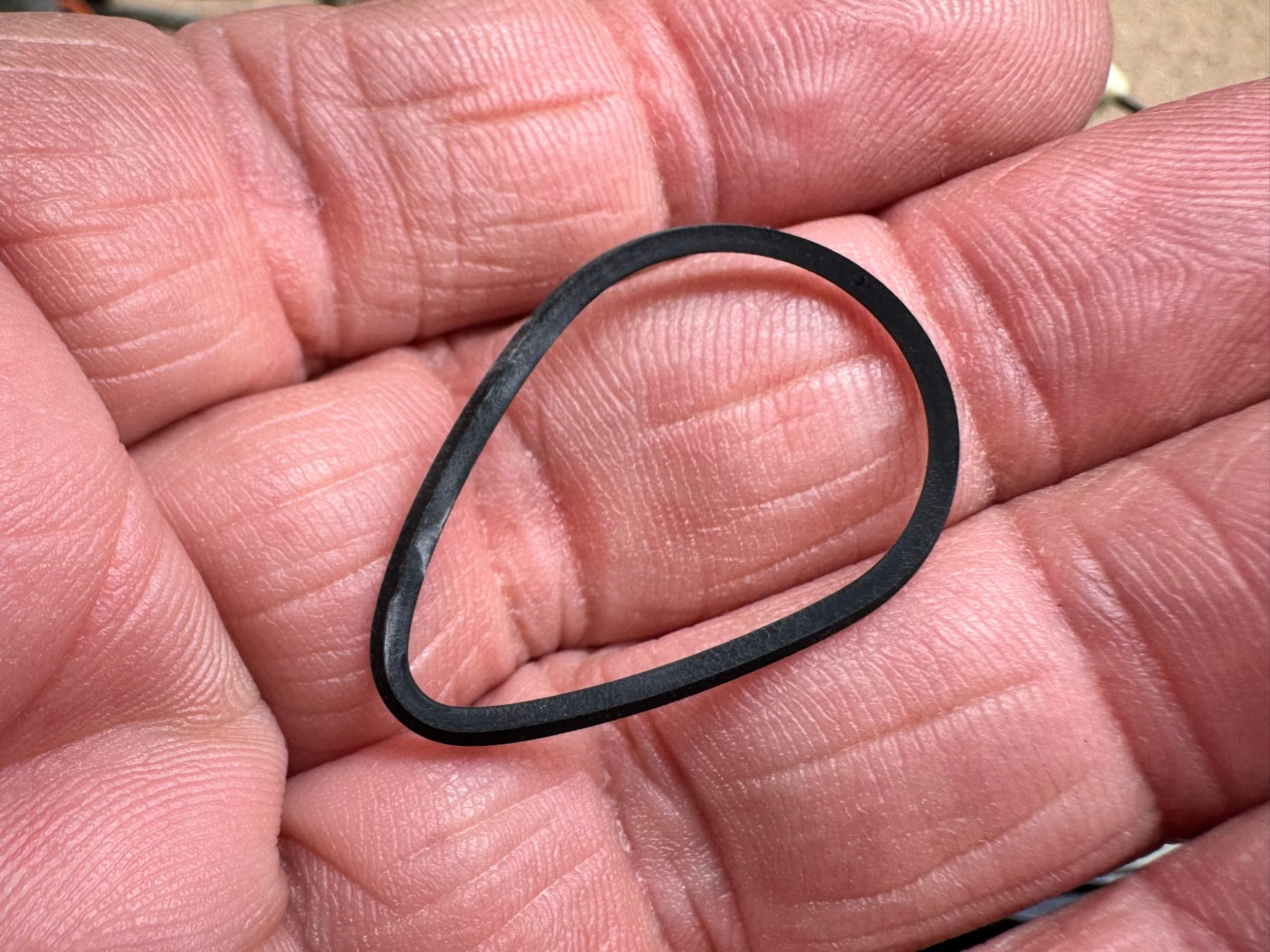
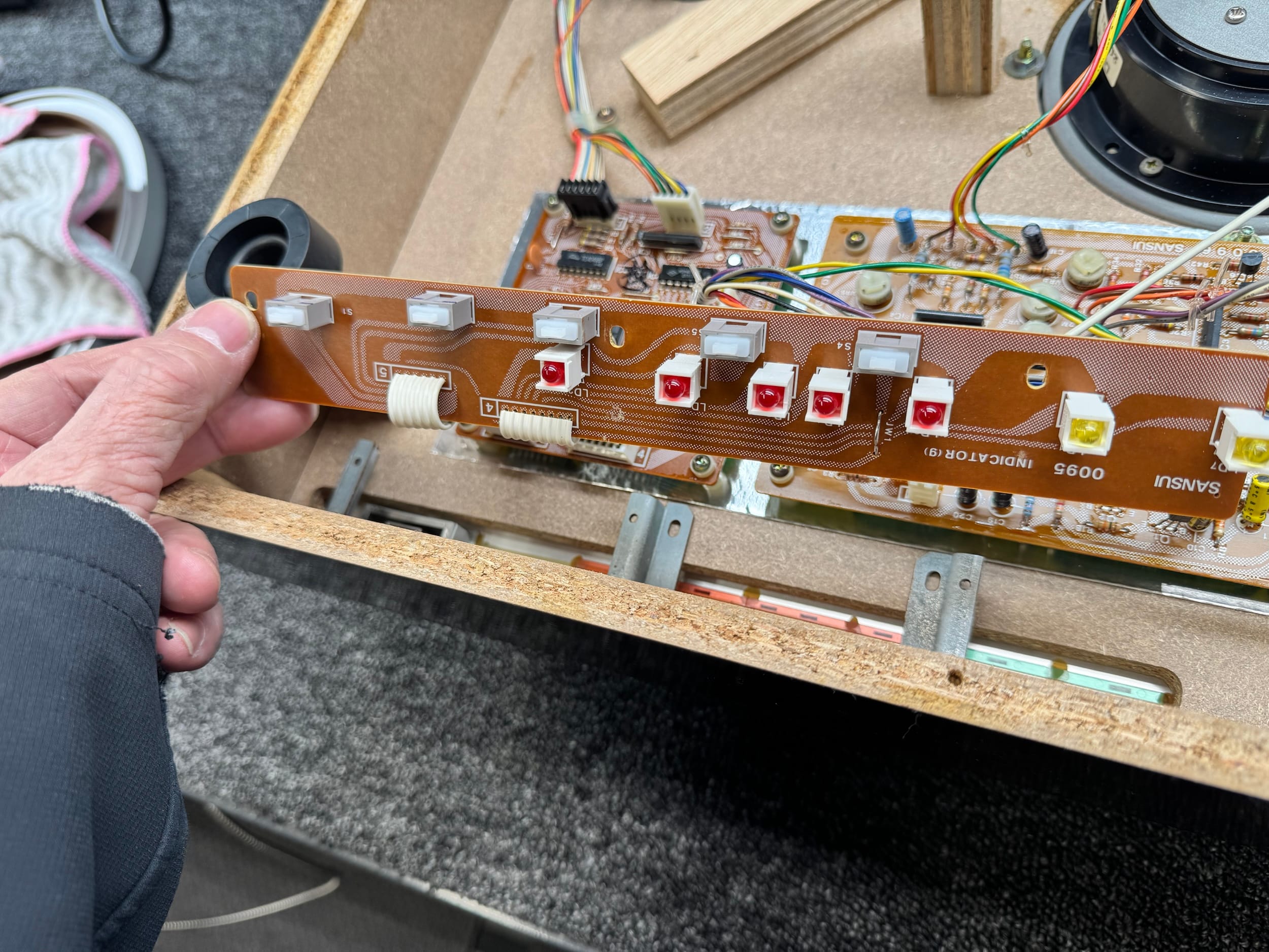
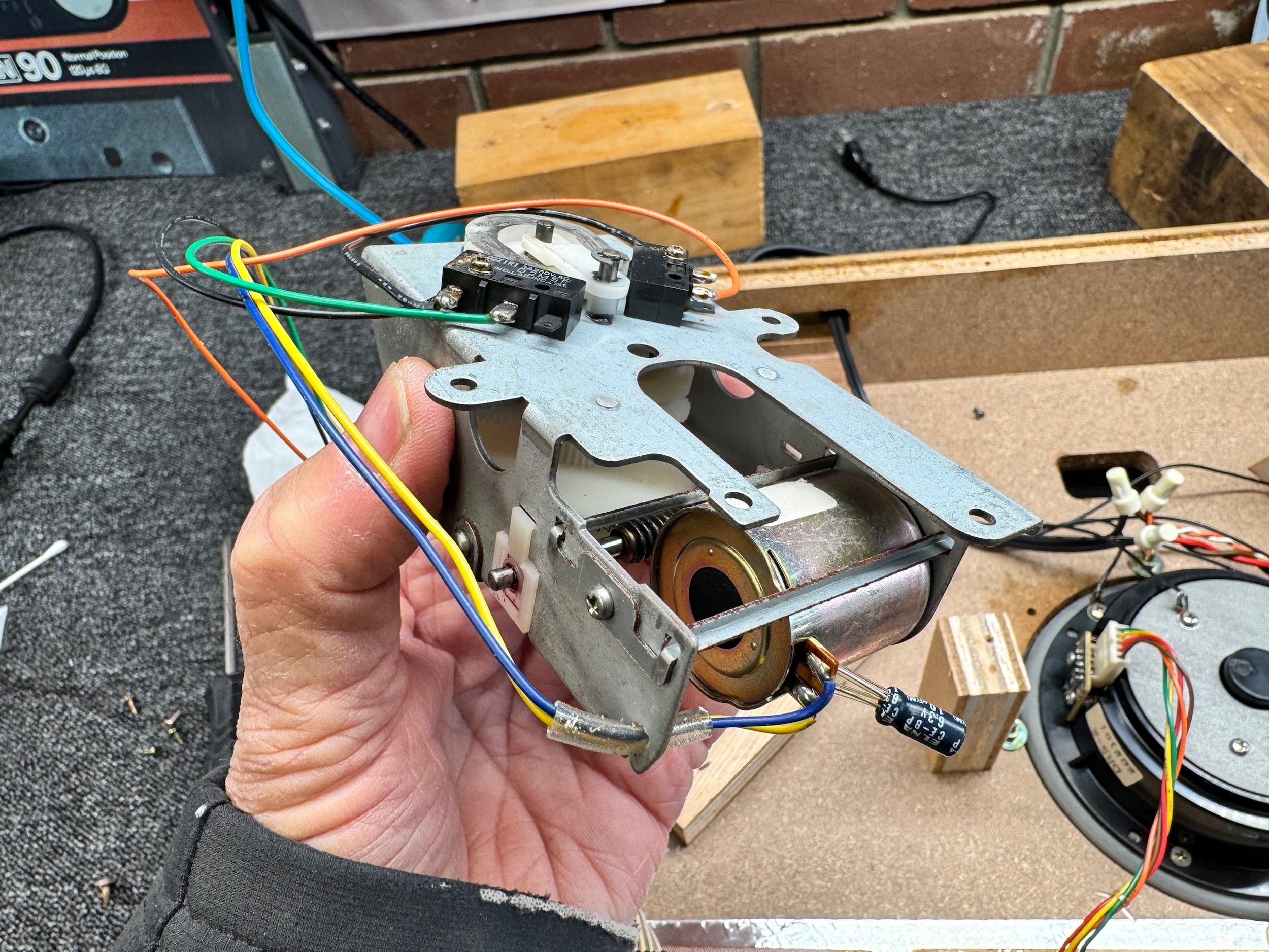
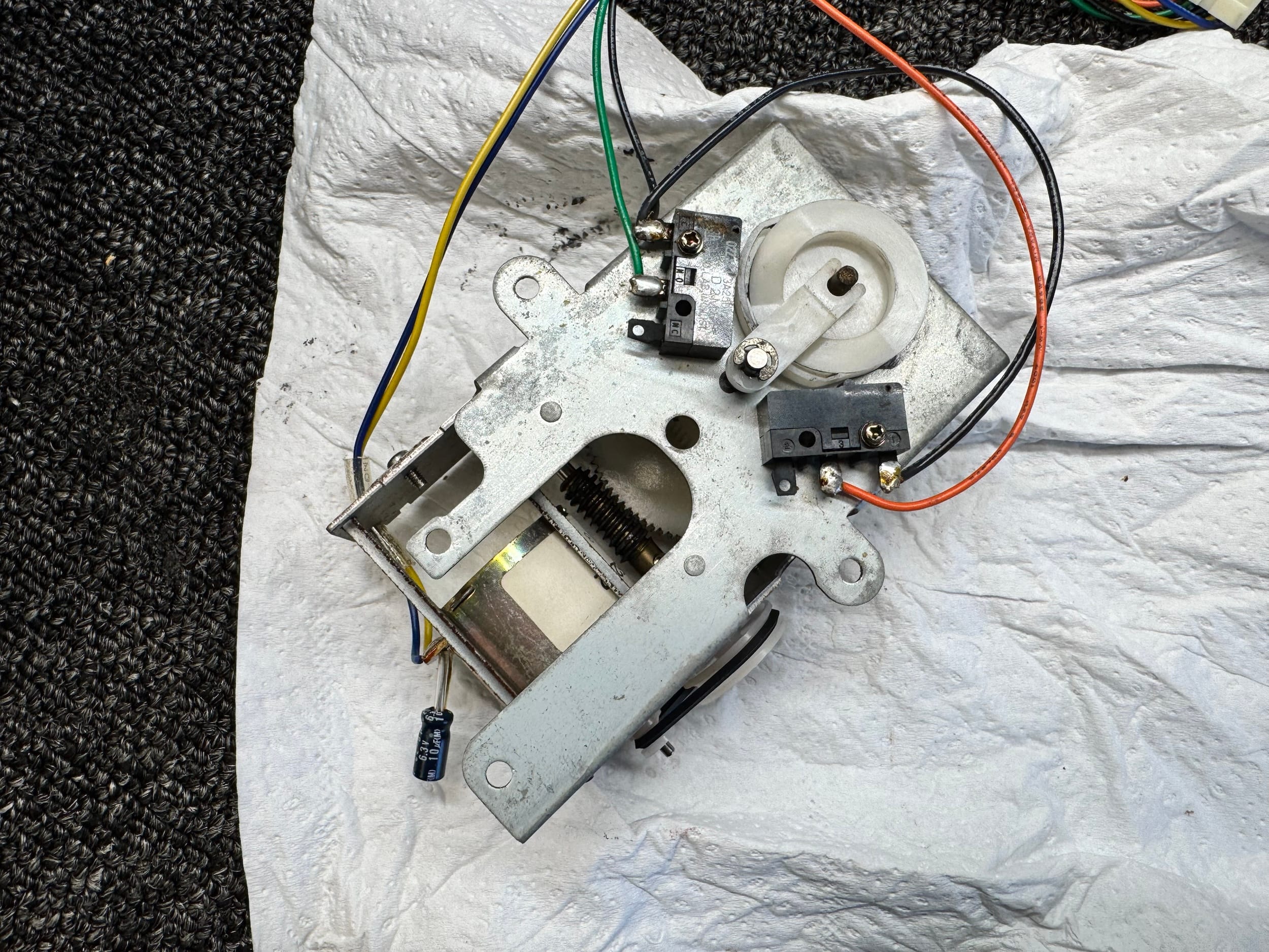
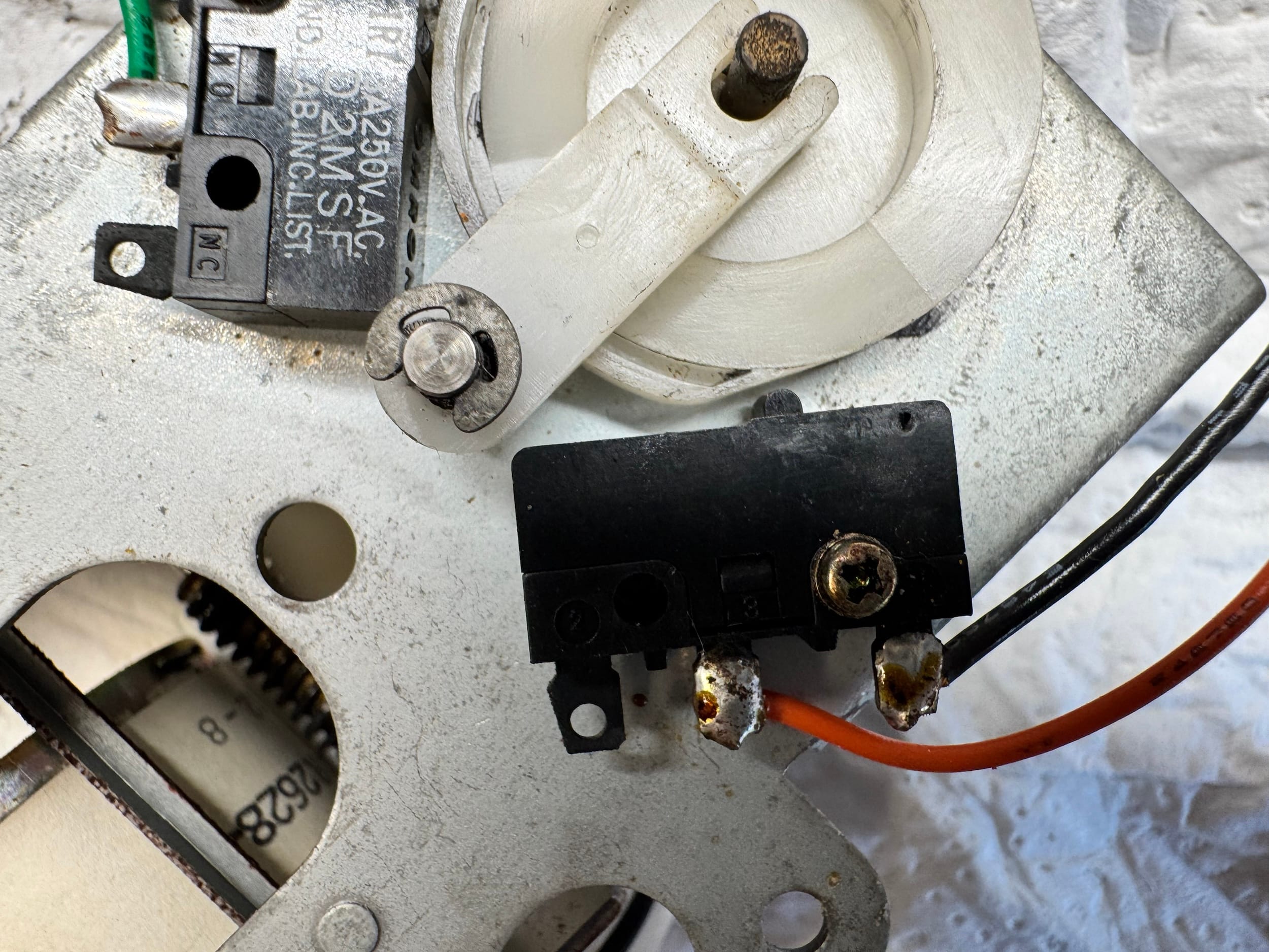
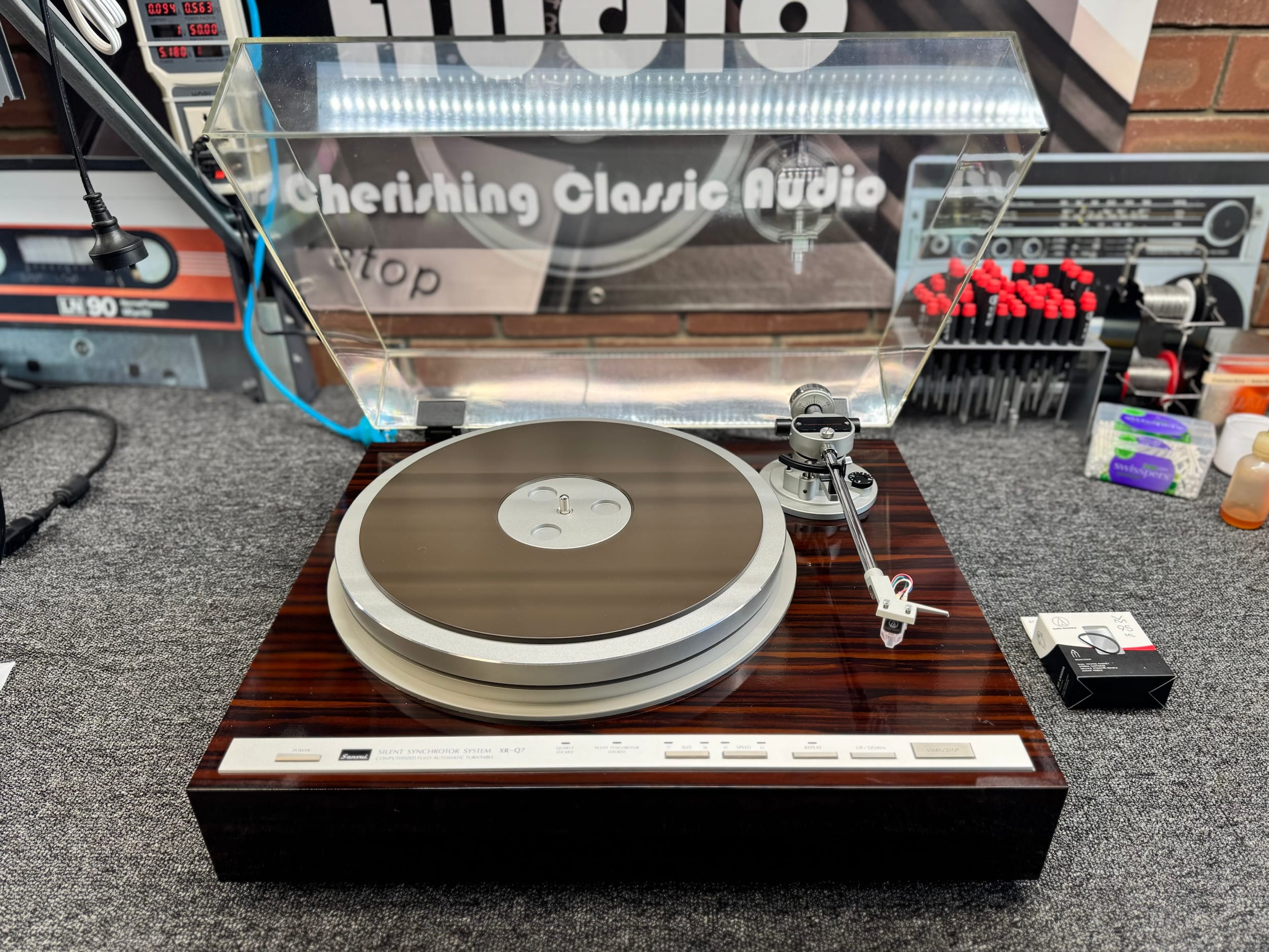
Results
Well, I think we can all agree, this is a tremendously good result! Finding a new old stock Sansui XR-Q7 was incredible enough. Getting it shipped here, in one piece, and then having it be exactly as described, was incredible again.
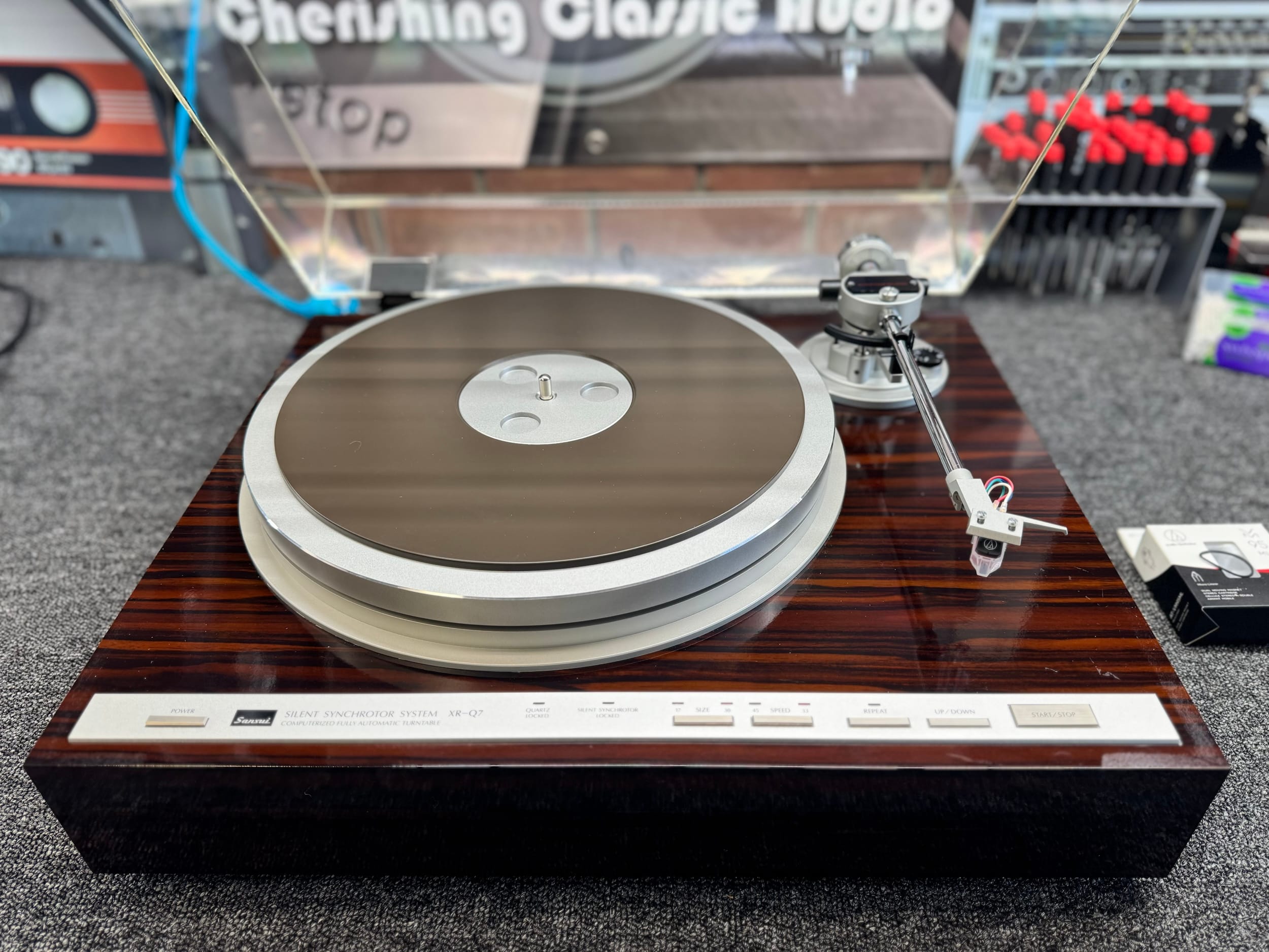
The final piece was repairing this XR-Q7 so that everything works perfectly, as it should. This last part was a great result and incredibly satisfying, especially preserving her otherwise original condition. Be sure to watch the video to see her in action!
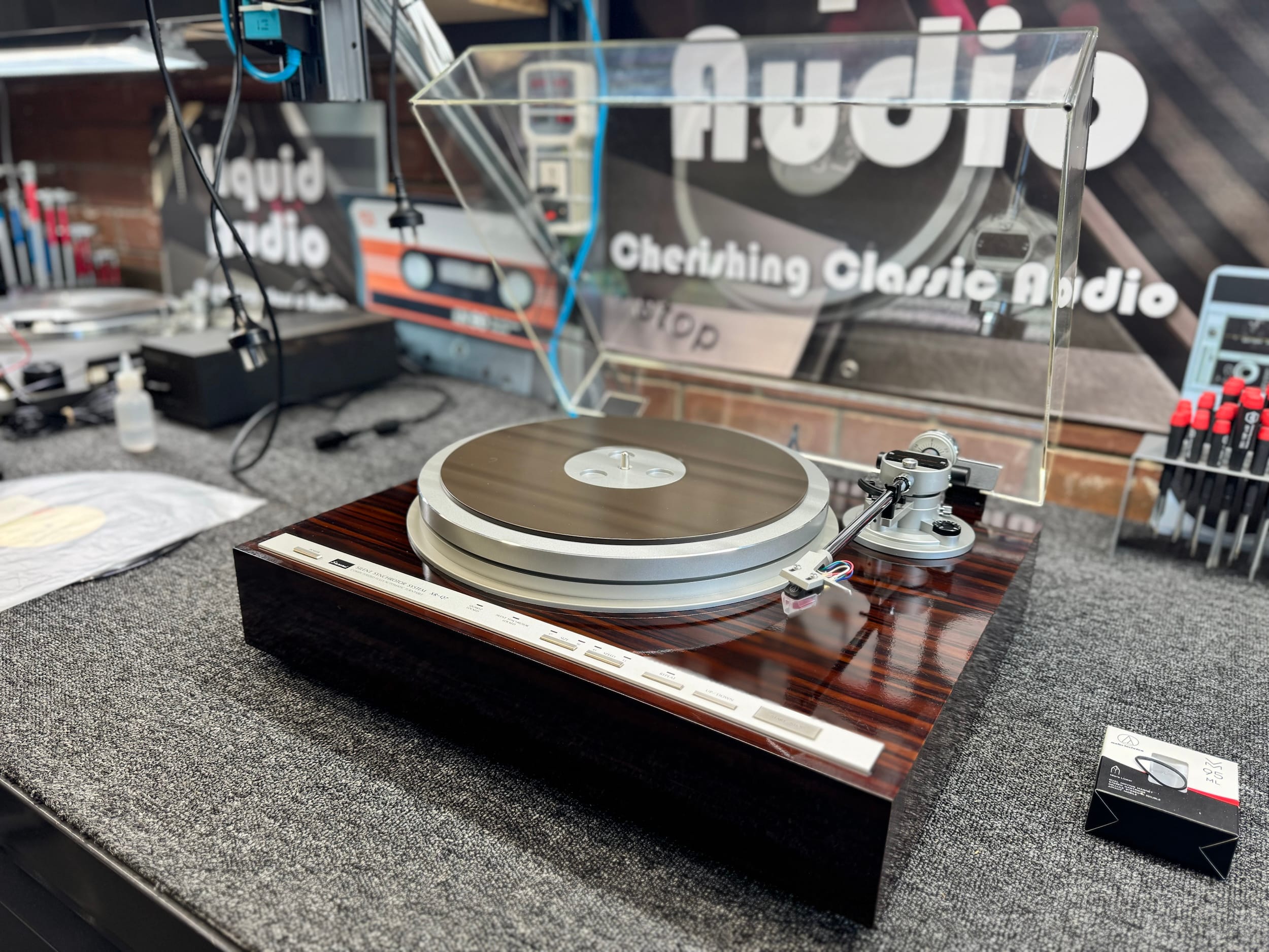
Rob, her owner, has wanted an XR-Q7 for decades, so to see the joy on his face when I demonstrated her when he collected her is a big part of why I do this. I know that feeling, I think we all do. It’s little things like finding something like this and having it work again that bring a warm, fuzzy feeling we can all relate to.
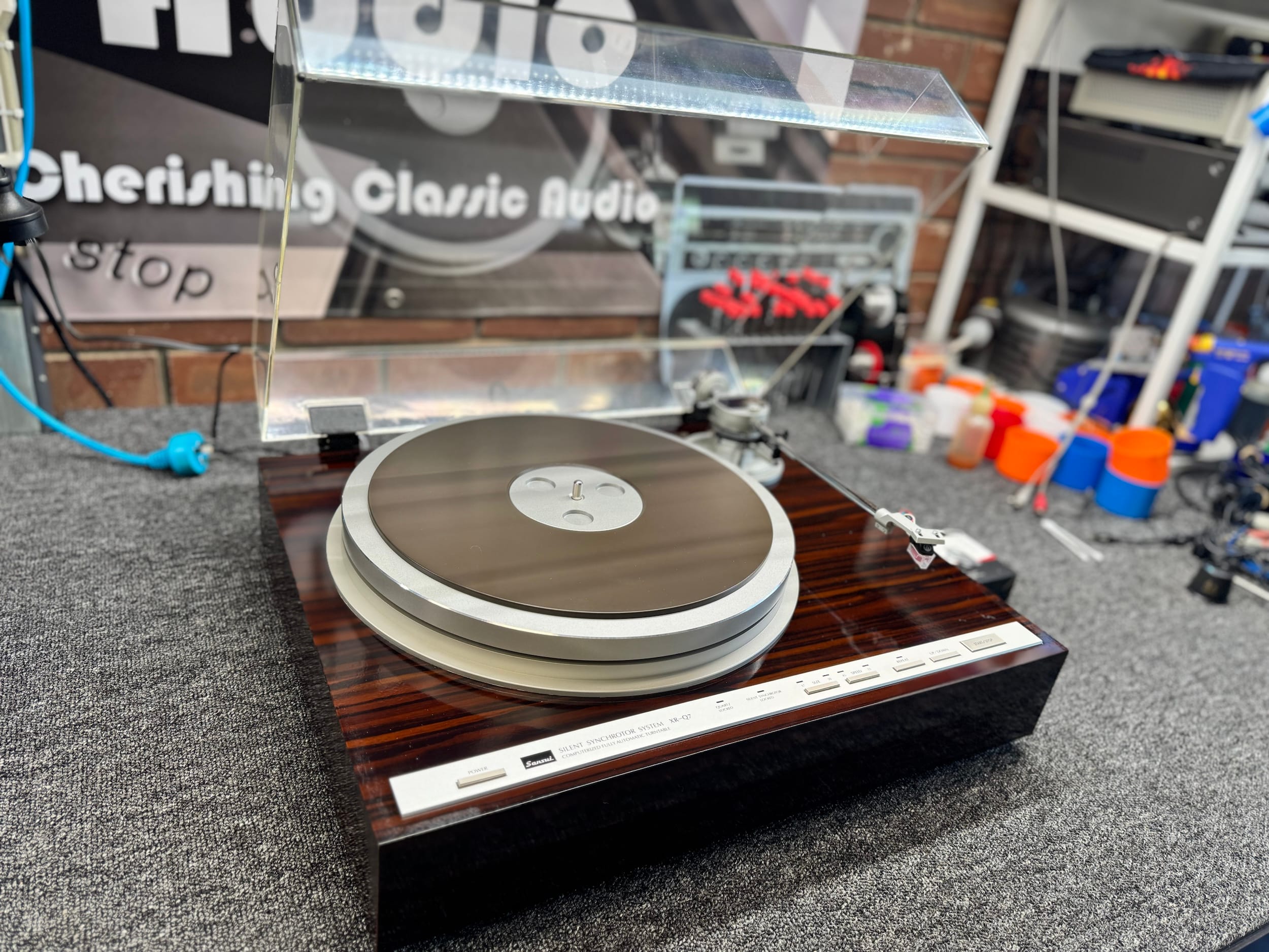
In terms of value, all up, I’m guessing Rob is about 3 grand into this one, and for a semi-serious, collectible Japanese direct drive turntable from the golden era, I’d say that’s a pretty darn good result, especially compared to what you can buy new for that money. However, for an otherwise unobtainable, new 45-year-old turntable from a beloved and now defunct Japanese hi-fi manufacturer, I’d say that’s priceless!
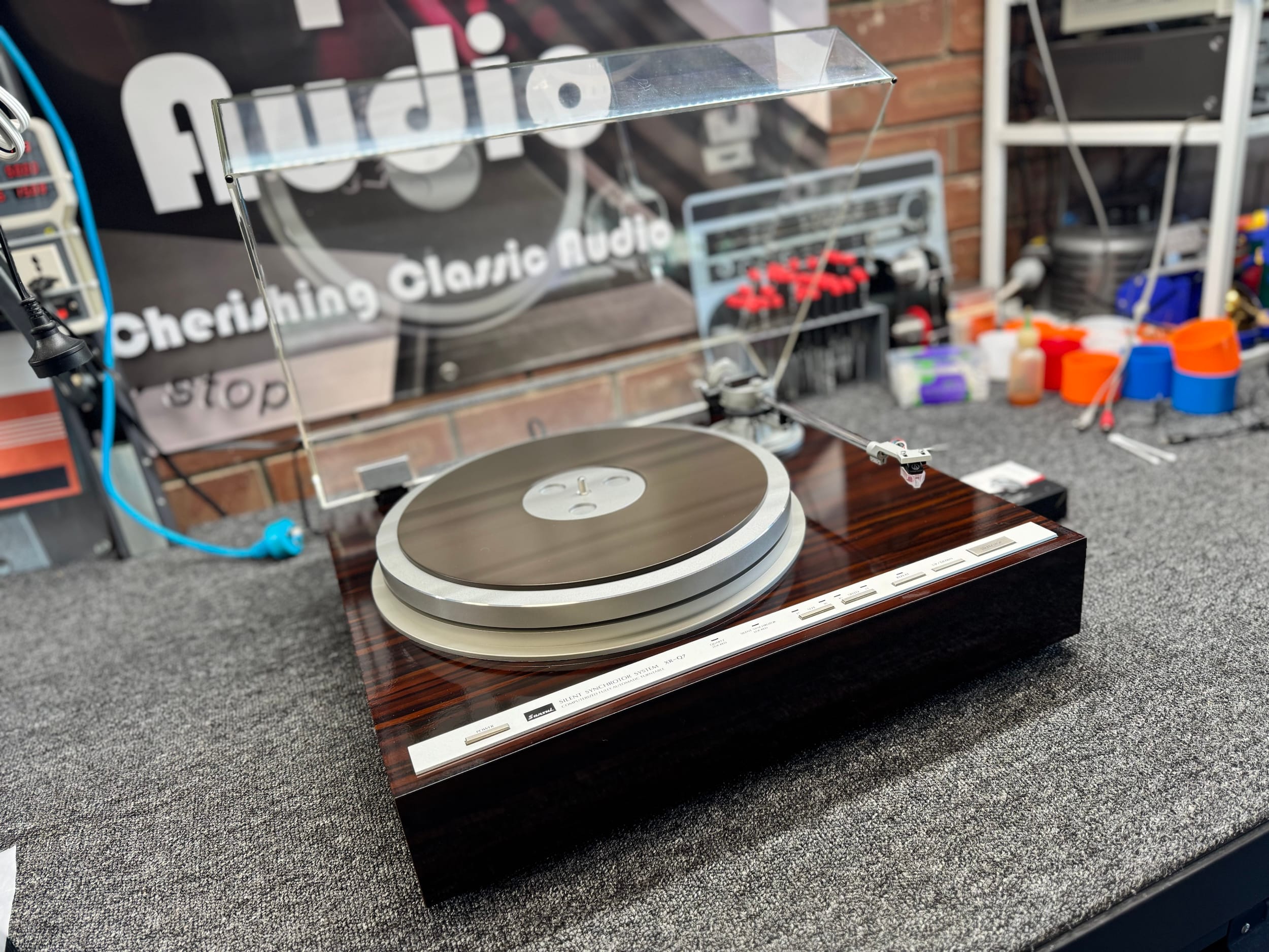
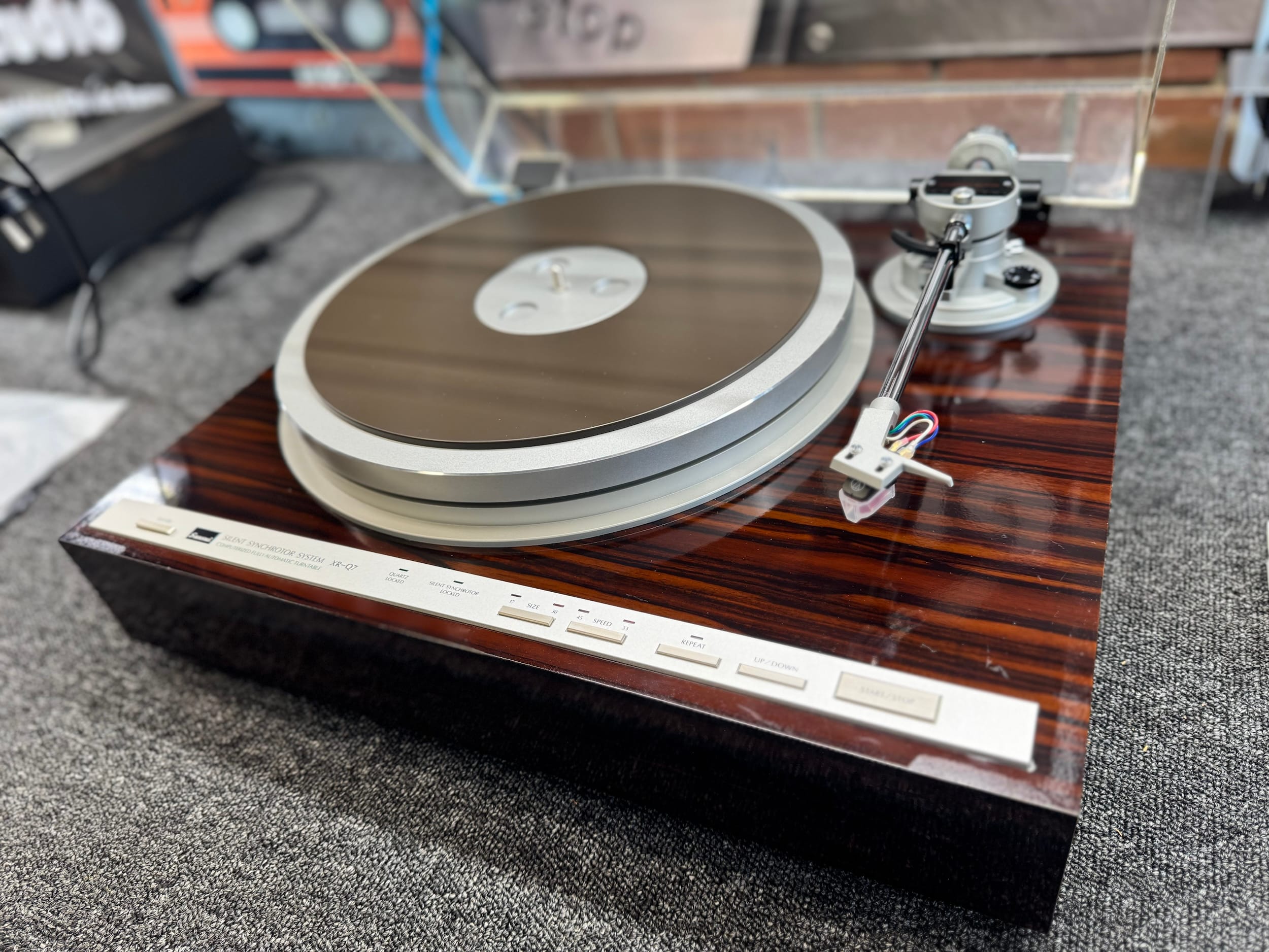
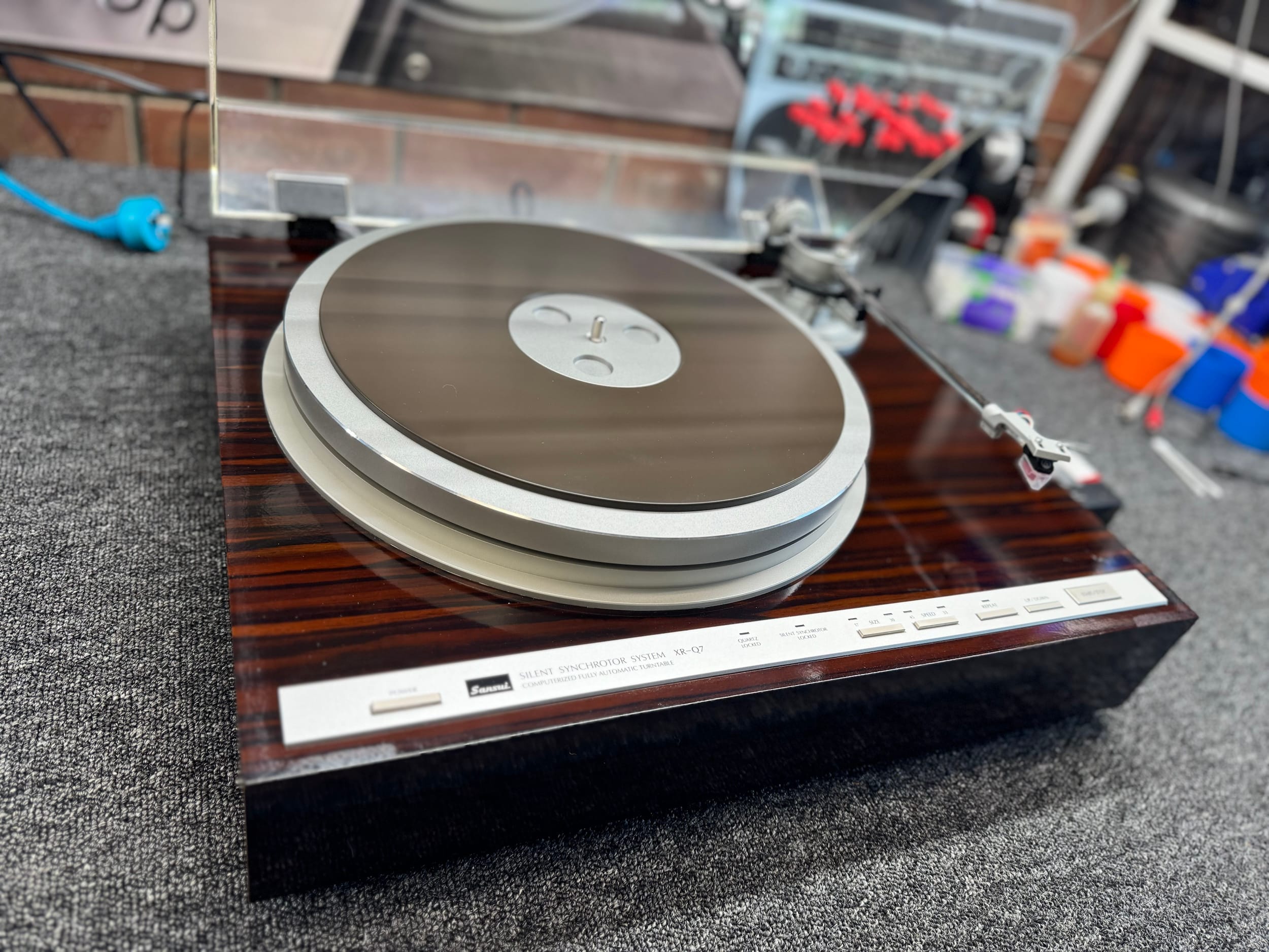
Thanks!
As always, thank you very much for stopping by and taking the time to read this article. If you’d like me to look at your Sansui XR-Q7, XR-Q9 or any other lovely Japanese direct drive turntable like the Kenwood L-07D you might have spied on the bench, get in touch!
A fair bit of time and effort goes into creating every one of these articles. This one took me about 6 hours! If you enjoy them, please like, share, comment, and subscribe. This helps support my efforts and allocate the time to create more content like this.
Discover more from LiQUiD AUDiO
Subscribe to get the latest posts sent to your email.

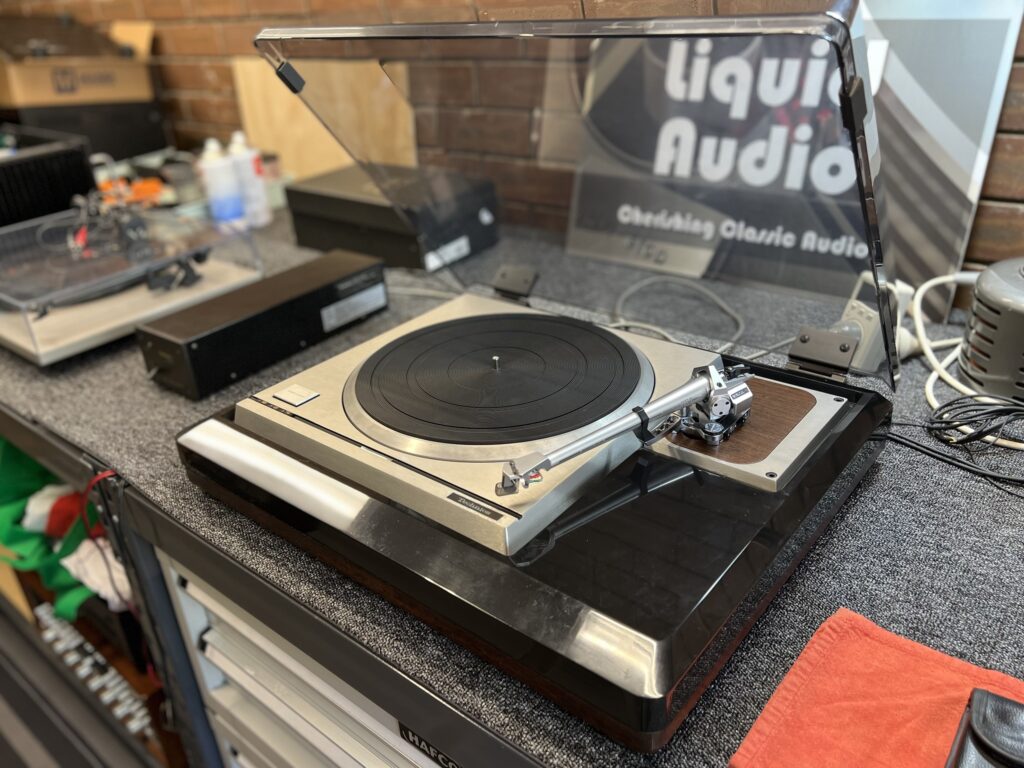
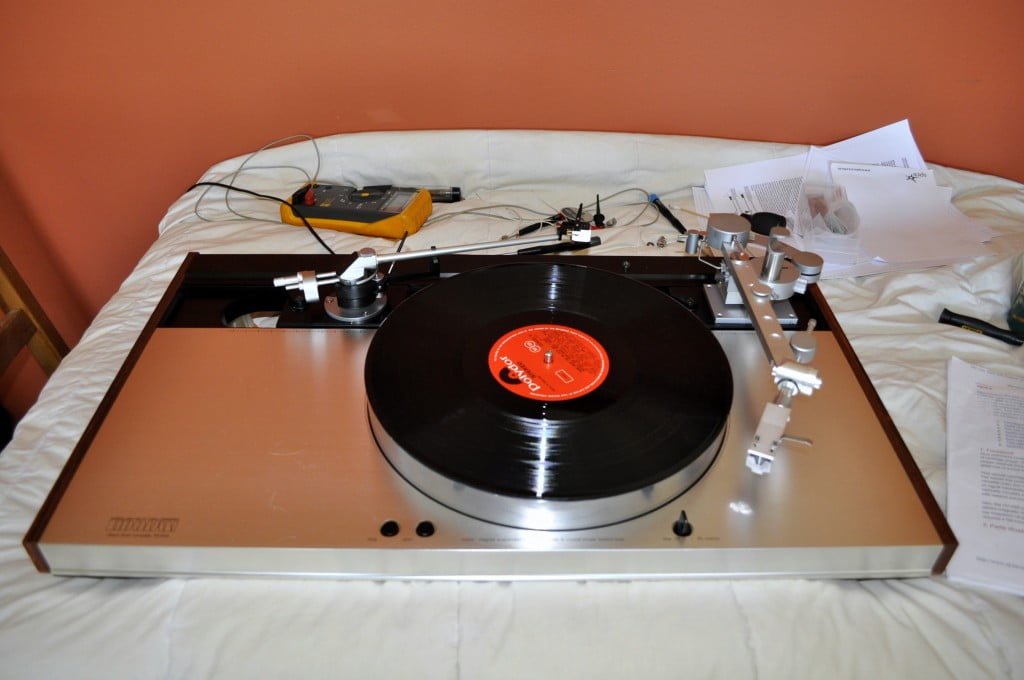
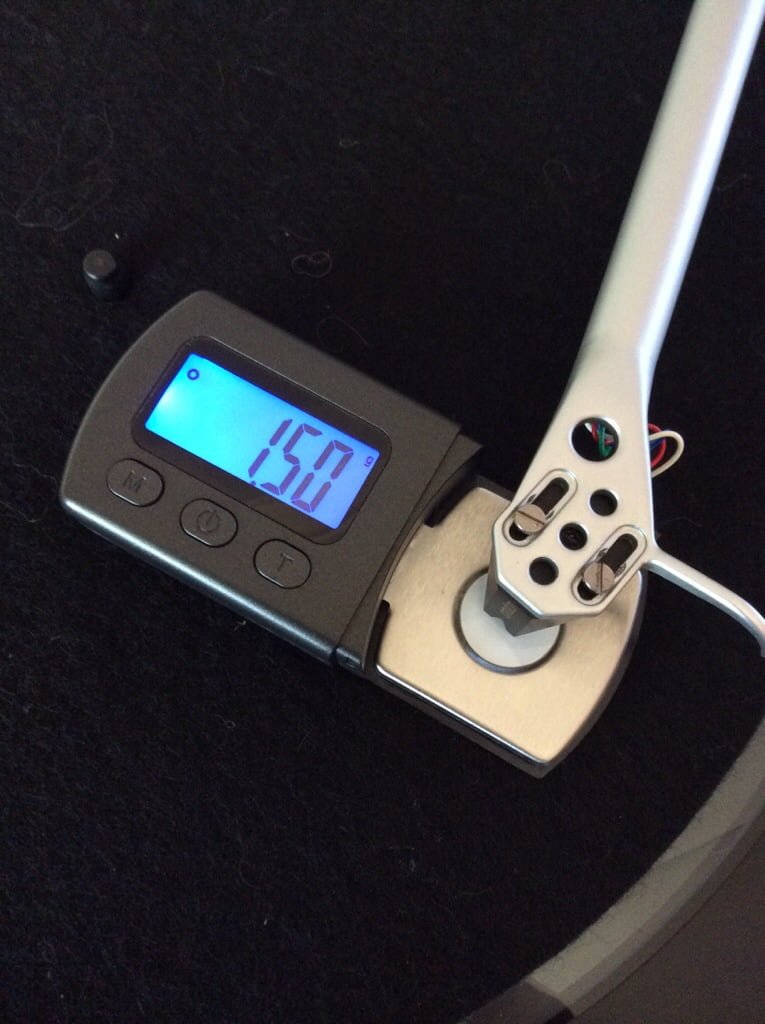
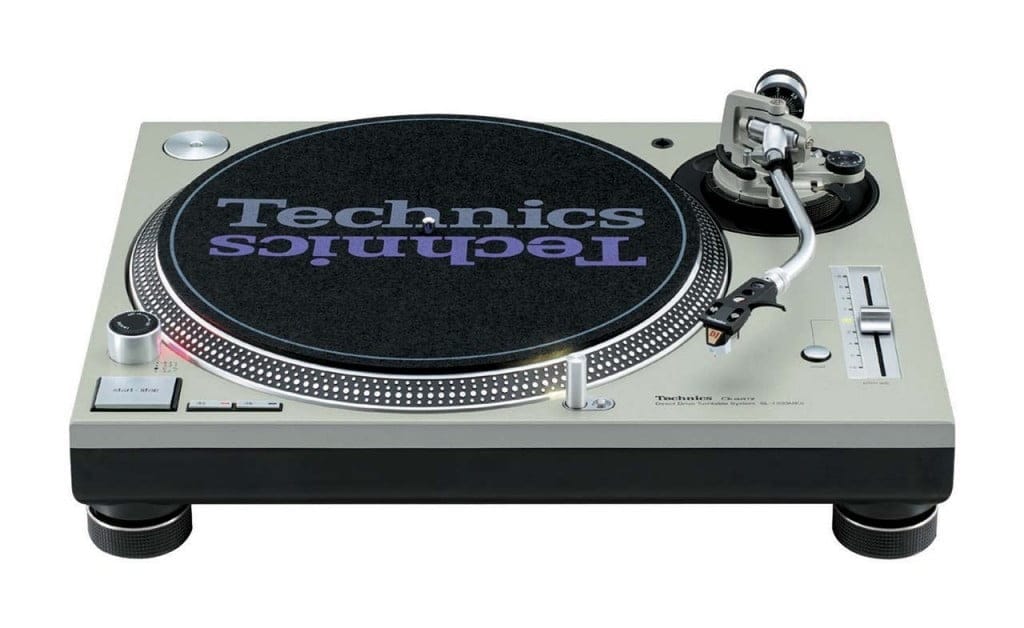
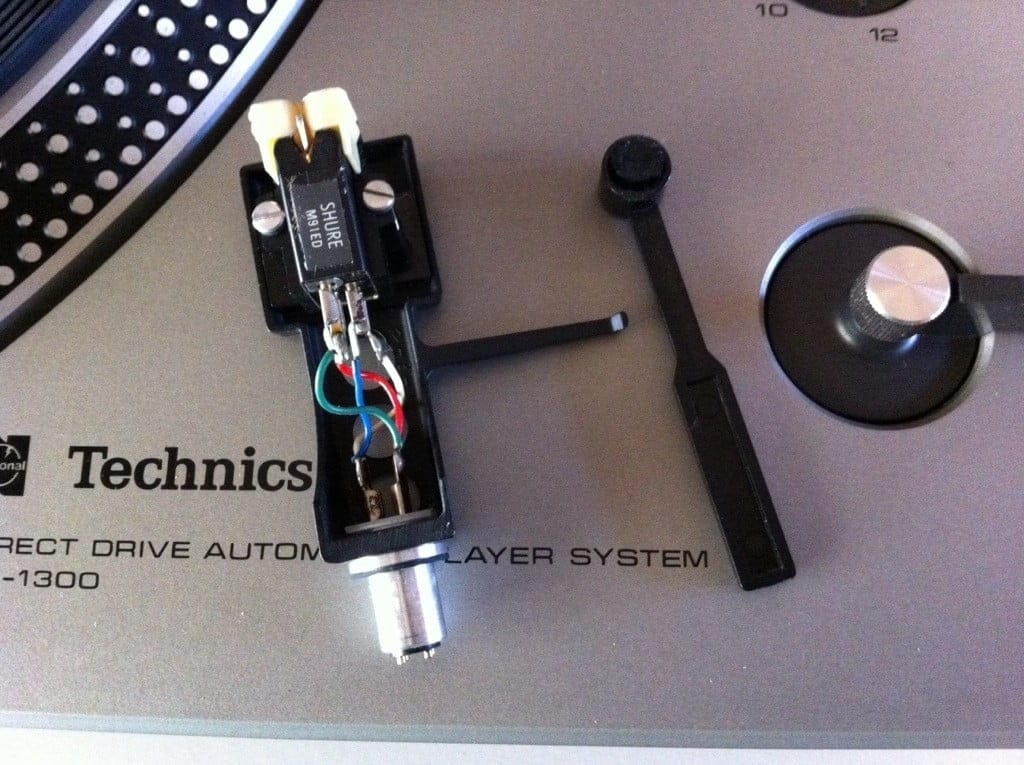
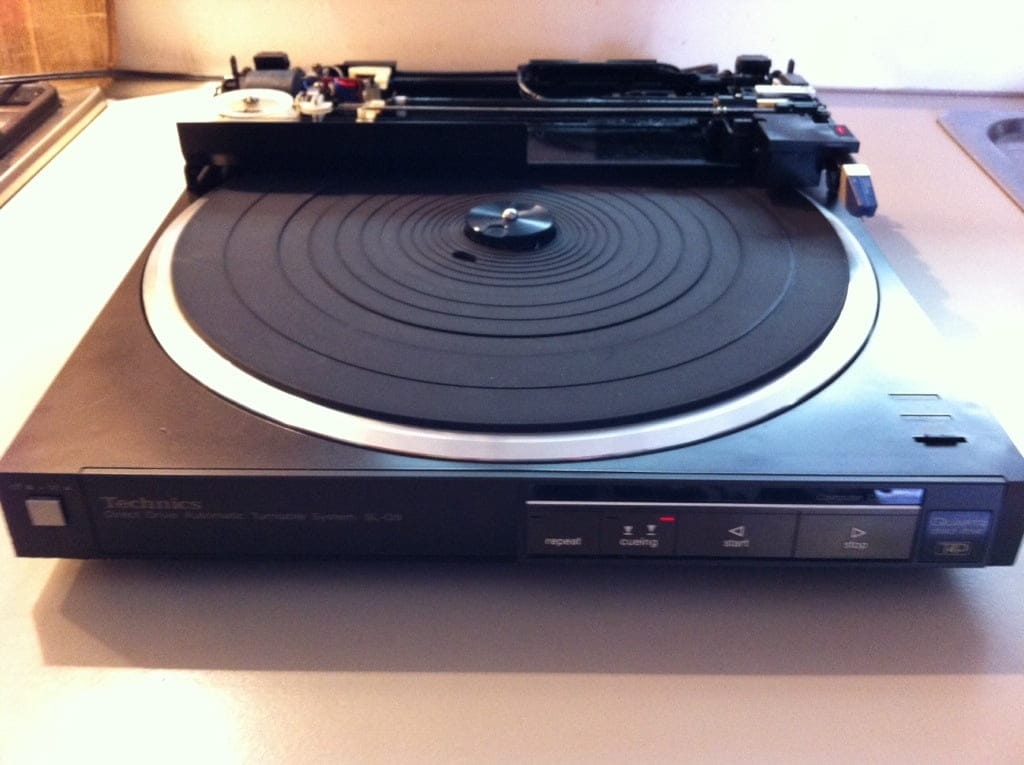
Thanks again Mike for undertaking one of my “bring back to life Sansui projects”. One day I will bring you something that actually works correctly and just needs servicing. Fingers crossed. Once again your article covers all bases with the work you did. From the unboxing to work carried out I loved this article from start to finish. It also gives me much more of an understanding of the effort you go to in getting these pieces running correctly once again. This is one of my favourite looking Sansui pieces and after looking for several years I jumped at the chance to grab this one when it came up. Yes I know I could of done a lot better in getting value for money but it’s not about that. It now sits proudly with my other Sansui pieces and I can’t stop smiling every time I walk past it and catch a glimpse. I’ve already run it for about 15 hours since the weekend and it hasn’t missed a beat. A very happy customer! Cheers, Sansui Rob
My pleasure, Rob. I’m glad you enjoyed the write-up, and yes, there is perhaps a bit more that goes into these jobs and articles than many people realise. You’ve done extremely well finding this one. Thank you for bringing her to me, and keep enjoying those records!
Unbelievable find and as fascinating and exciting this is, it gets even better with the article you write about the unit and the fabulous work you do Mike, thanks.
Thank you, Vladan, glad you enjoyed this one!